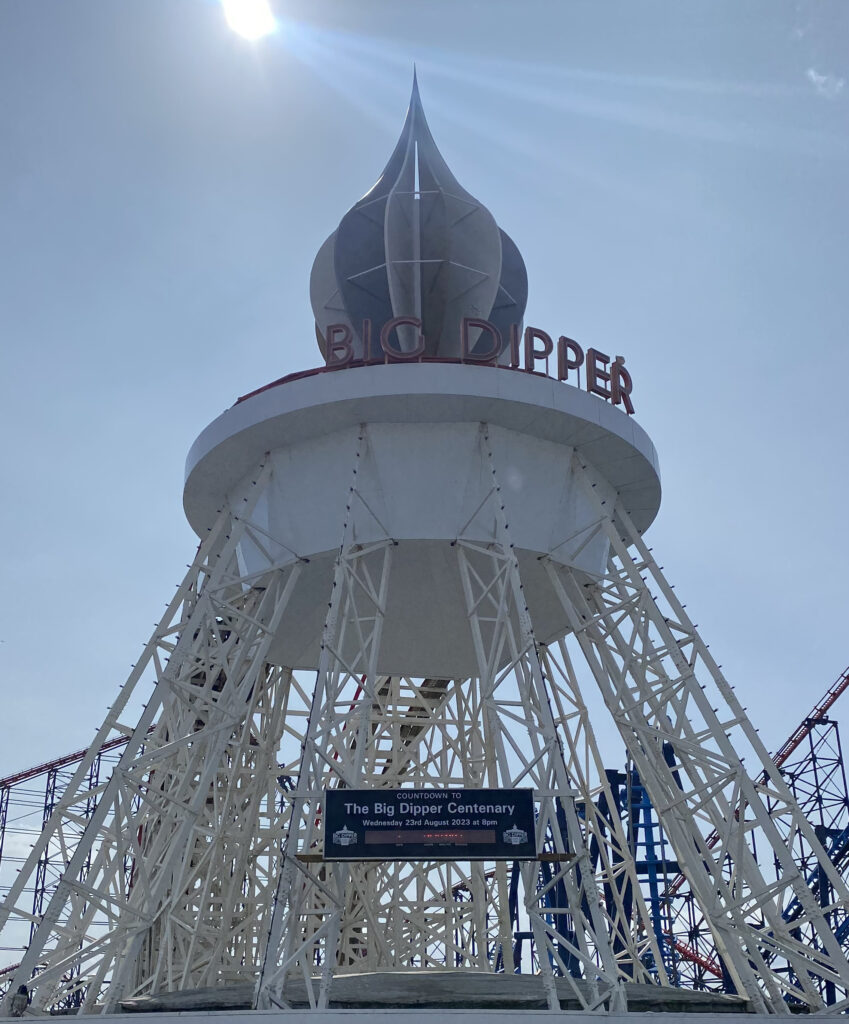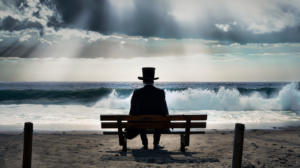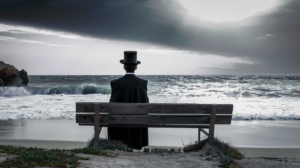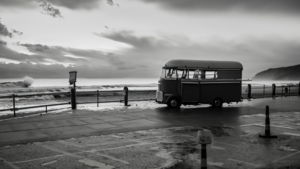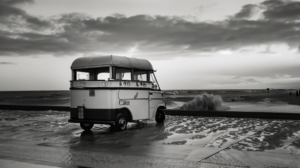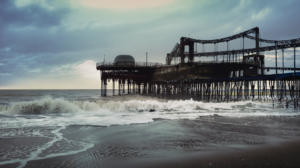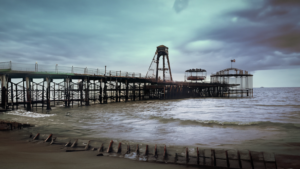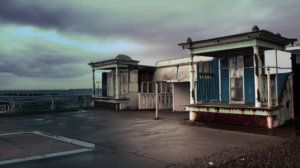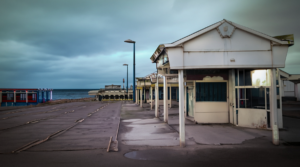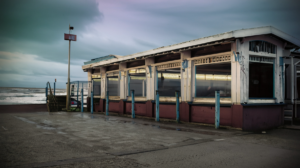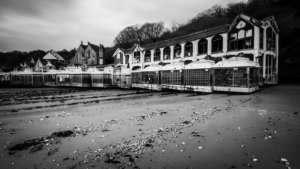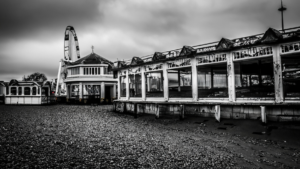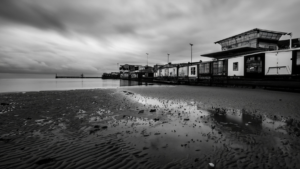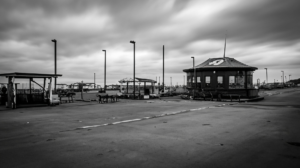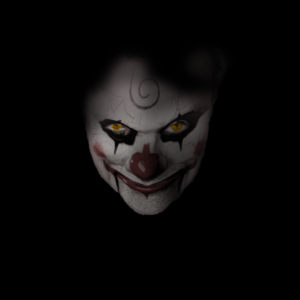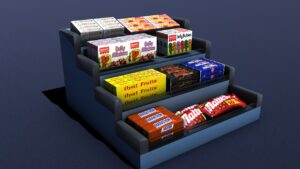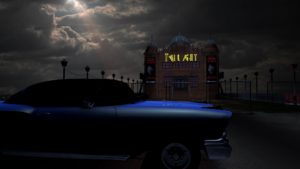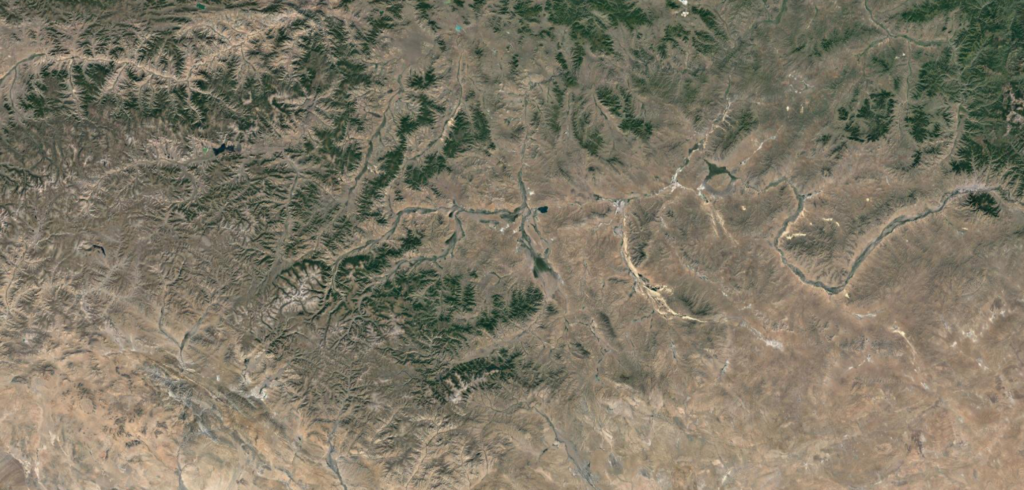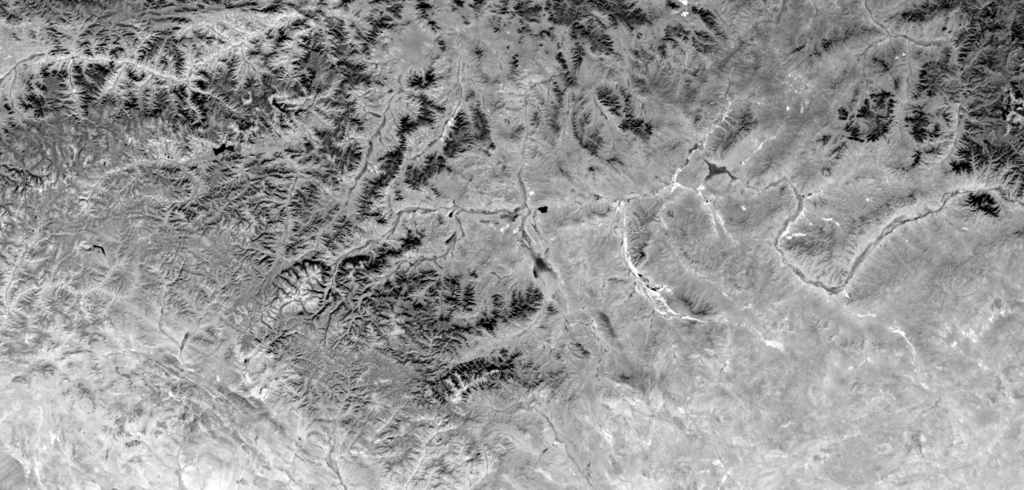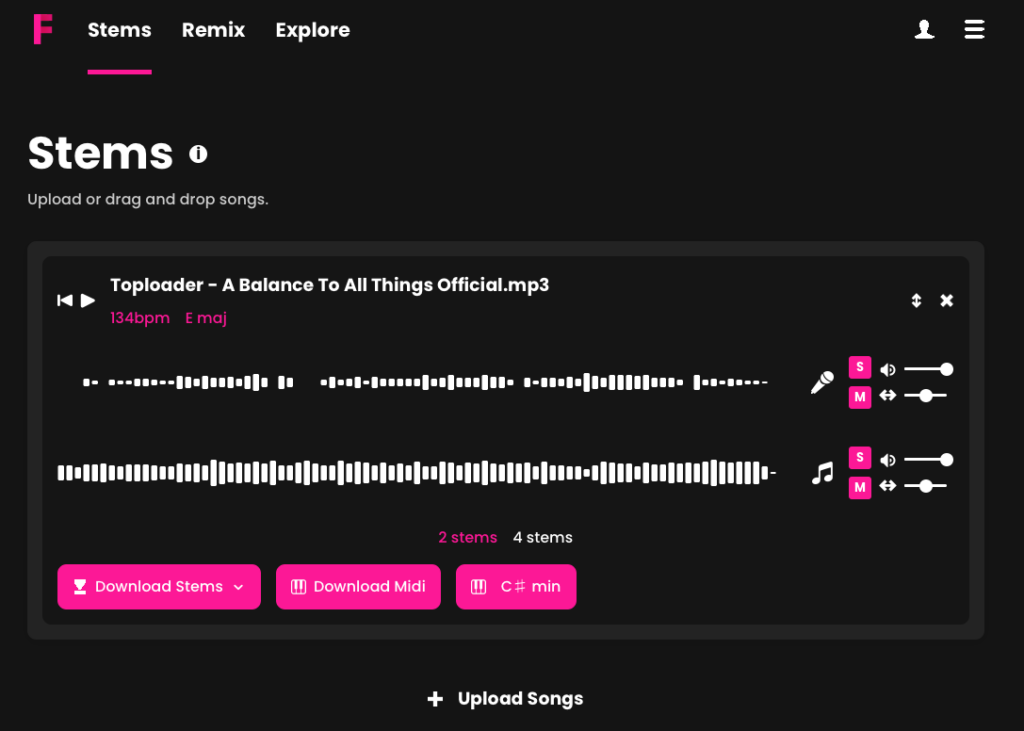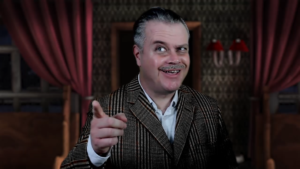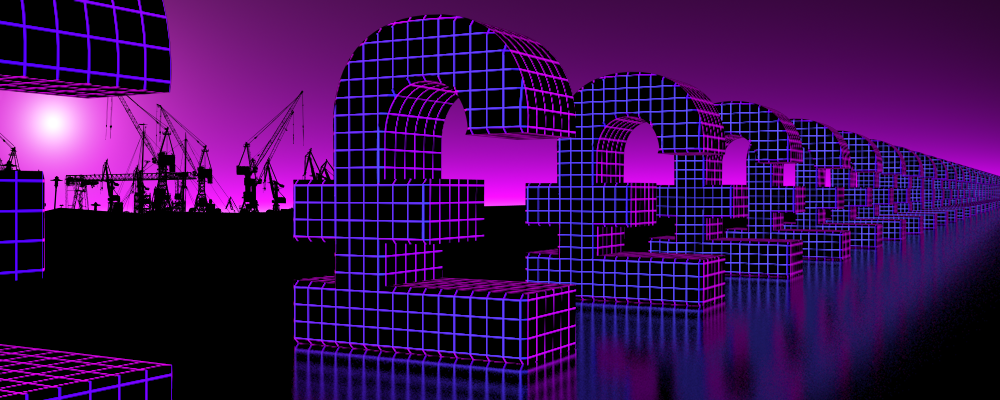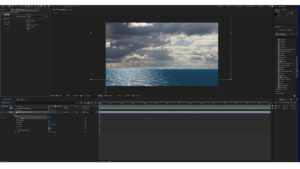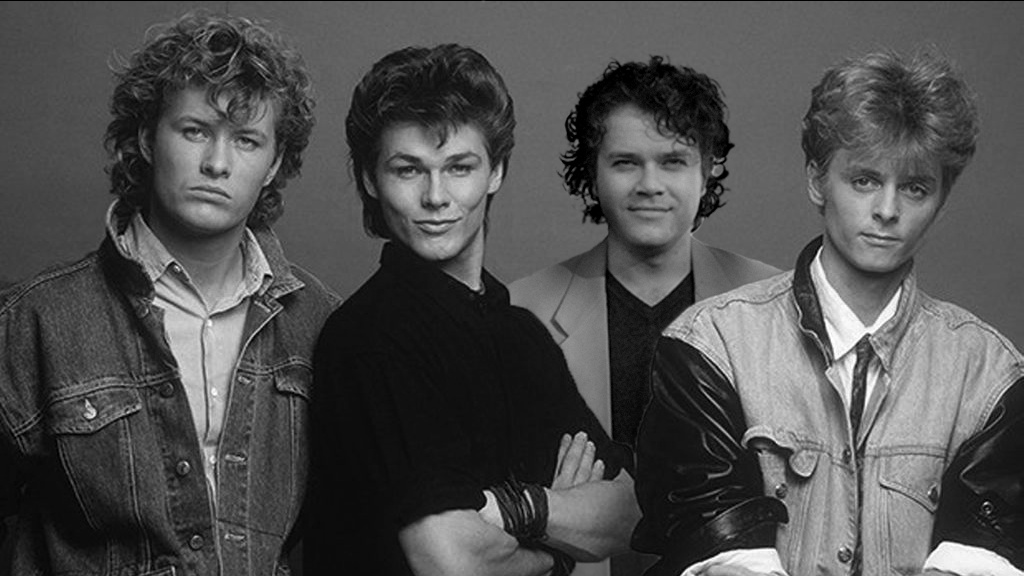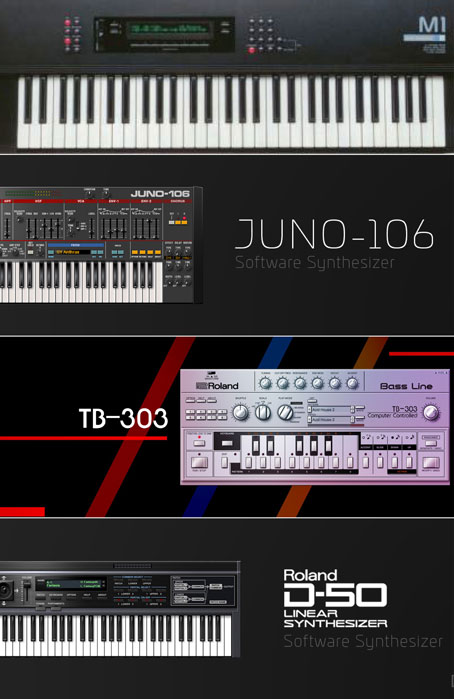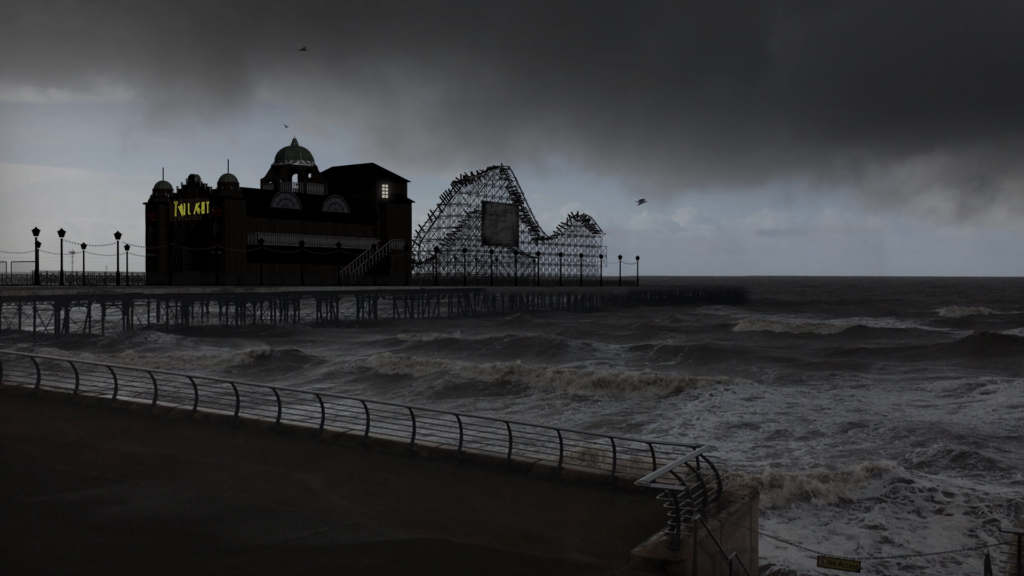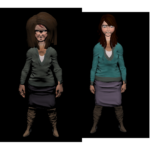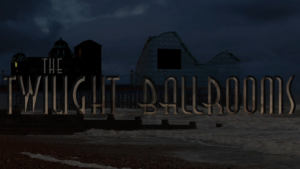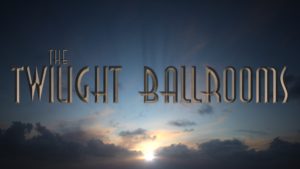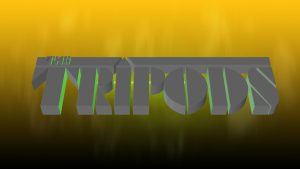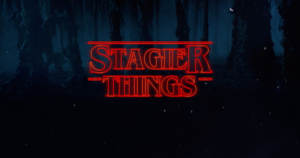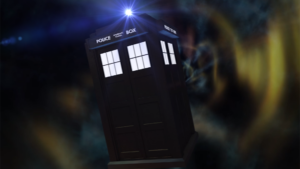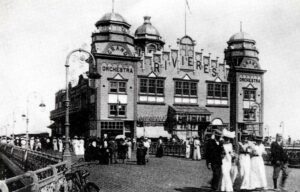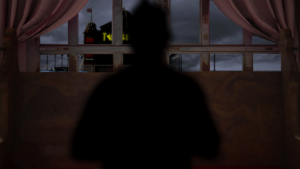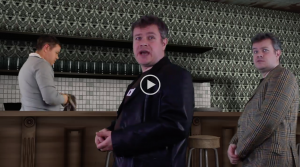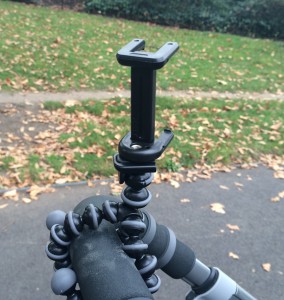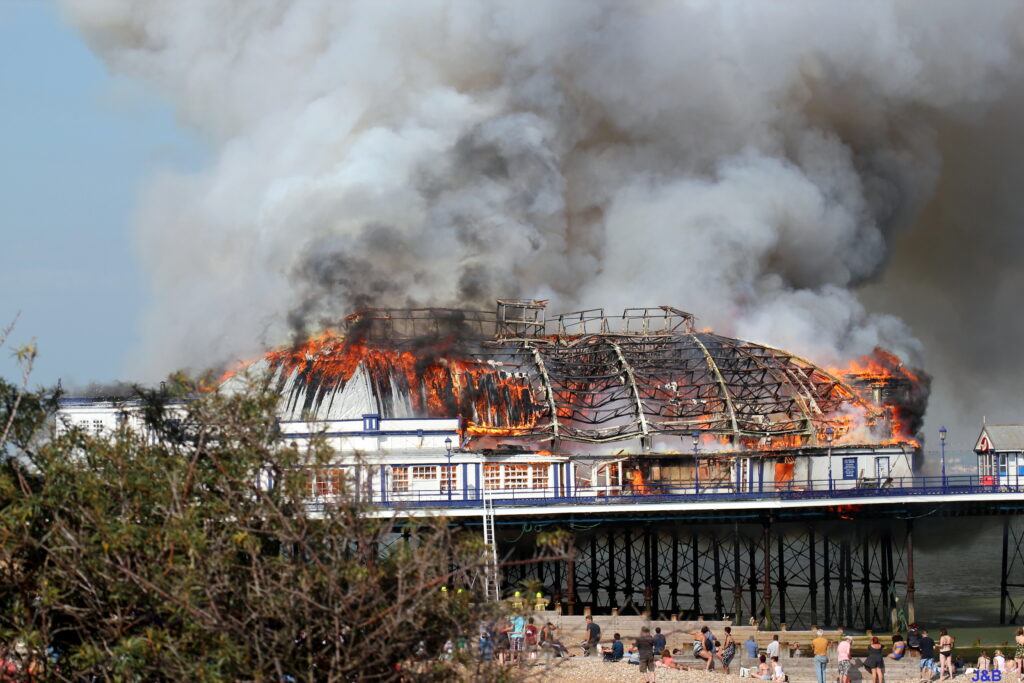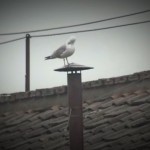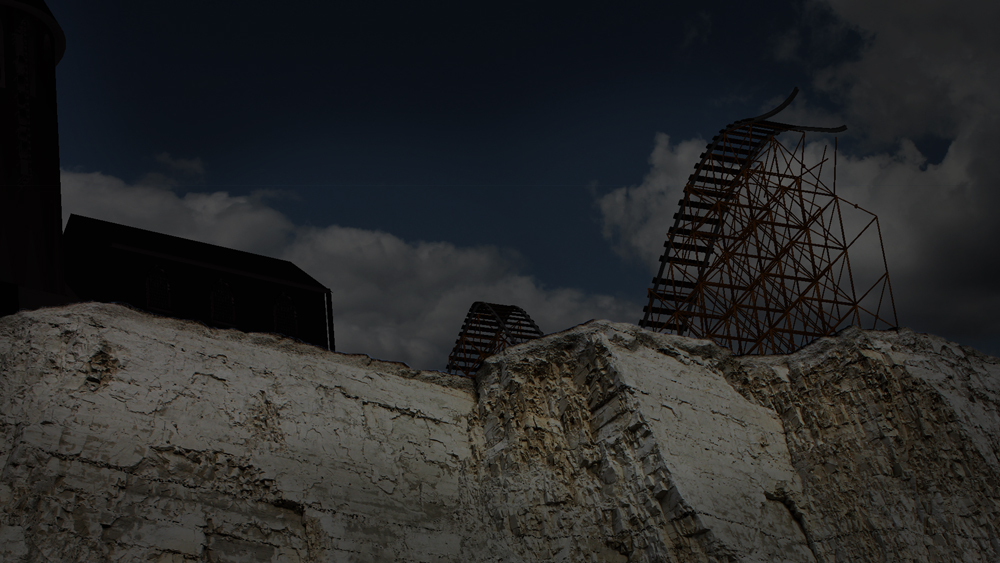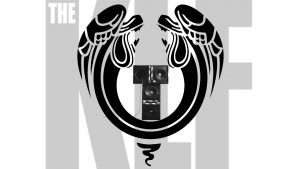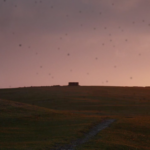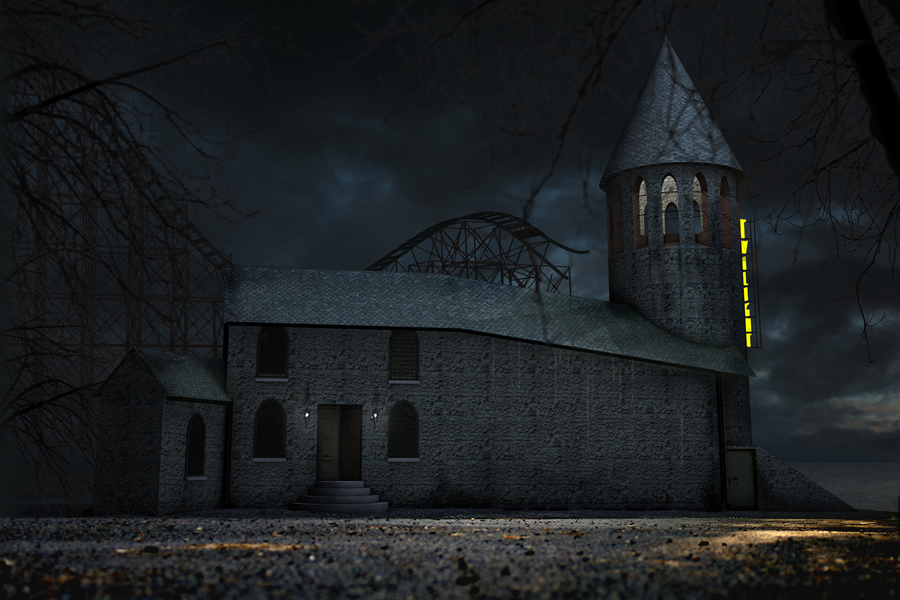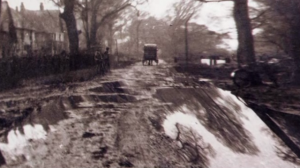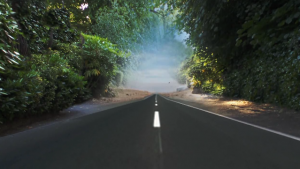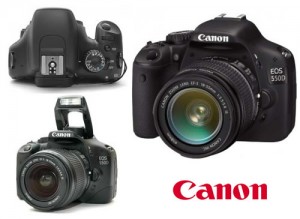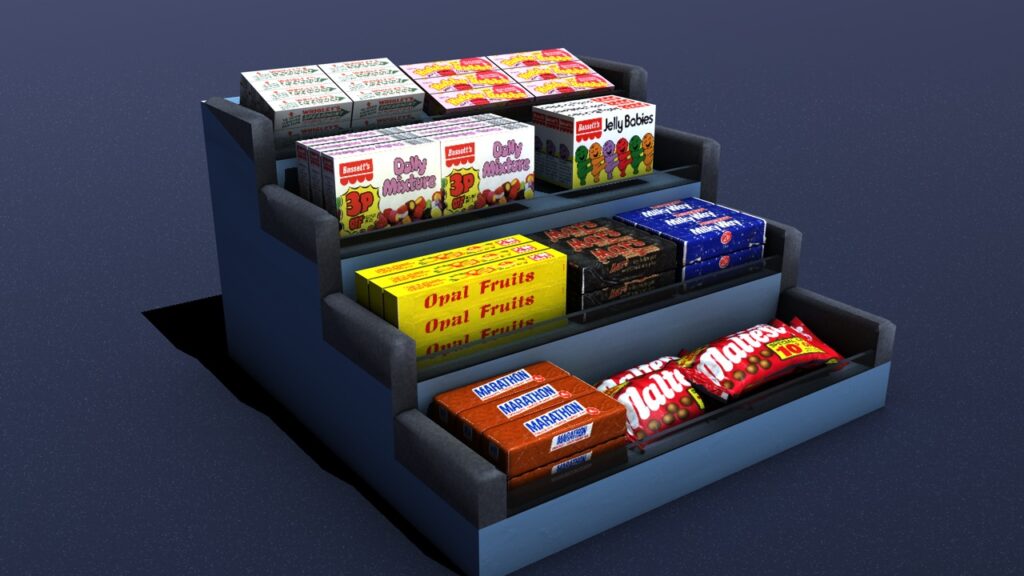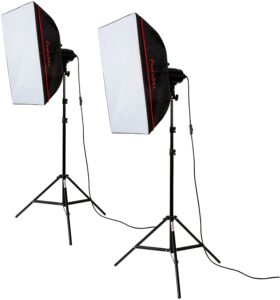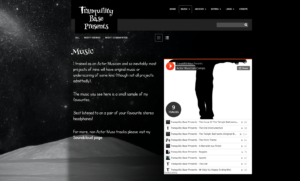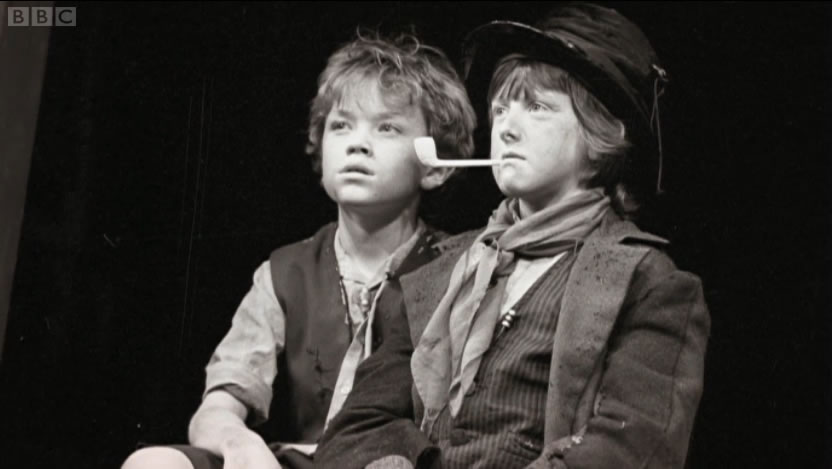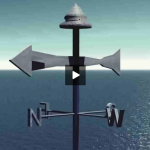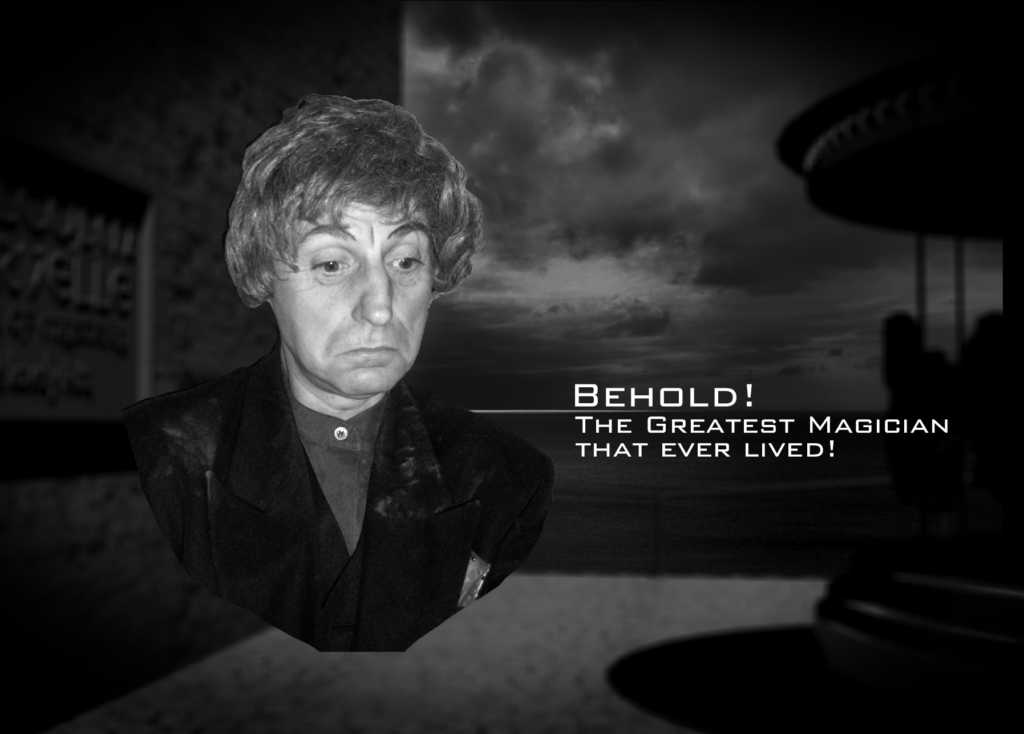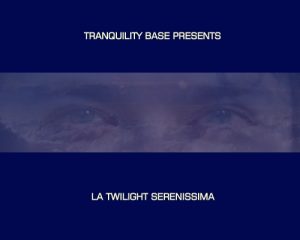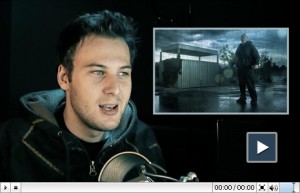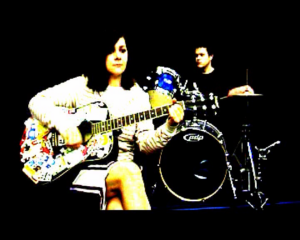Author: Anthony Pearson
New Tunes
Here’s some new tunes I’ve been doing on what is my first album of ambient tunes. Might develop some further down the road.
More live piano
This bittersweet melody was originally composed for the third series of comedy TV show “The League Of Gentlemen”
Sneaky peek
I have fought off posting any clips of the Twilight Ballrooms safe for the trailer. However, this year marks the 20th anniversary of me starting this website and I couldn’t let it pass without doing something.
In 2015 I posted a clip of an opening scene from the movie. It was chiefly my first attempt at playing four characters at the same time and the technical challenges that involved. Well I’ve decided that given the script hasn’t changed, I will post the same scene again but from the finished film, so you can compare the two. The accents are still dreadful but YES it’s a first glimpse of the movie and the weird animated world of Wits End! Enjoy.
And given this posts theme is “money for old rope” I guess I can plug the anniversary film I did 10 years ago for that anniversary too!
More AI – Stable Diffusion
In the last post, we took a look at AI image generator Firefly by Adobe. Now it’s the turn of Stable Diffusion which can be used at clipdrop.co along with a host of other features and, unlike Firefly, is free to try. And in my opinion, it is superior to Firefly.
Judge for yourself. Below is the latest episode of the Twilight Ballrooms Movie Diary which starts with the prompt I gave it and the result it produced. I will add that all of these pics were also enlarged using Adobe Photoshop’s generative fill and I have added a Lumetri filter to make it really atmospheric.
And finally, a Happy 100th Birthday to the Big Dipper rollercoaster at Blackpool’s Pleasure Beach. I took my family there last week and for my kids it was their first time on a rollercoaster. We also went for a cream tea dance at the Tower Ballrooms where we were taught the Charleston accompanied by, you guessed it, the Mighty Wurlitzer! Ah heaven! Thoroughly recommend it!
AI – A revolution begins…
The year 2023 will go down in history as the year AI was released on the general public. Social media is already awash with people’s efforts. I’ve enjoyed ChatGPT (the GPT stands for Generative Pre-trained Transformer) and have jokingly called it my new friend. I’ve given it old essay questions from college and it’s churned out such impressive answers in seconds. I’ve also tried to baffle it with hard and surreal questions such as “Using Peppa Pig as a metaphor, explain string theory” or “Using follow-spotting as a simile, explain fascism!” And it’s answered everytime with erudition. With such “intelligence” there have been many media stories of scholars predicting the eventual destruction of our species because of AI, some suggest in as little as two years. Others have voiced concern about the job losses it could also lead to. But I digress.
This post is to showcase my latest efforts with Adobe Firefly. Currently in beta and therefore free (although I do subscribe to AdobeCC) I thought I’d check out it’s picture generator and why not try some Twilight Ballrooms ideas. So below is the result.
These are the pick of the crop. AI is still in its infancy and even with these images you can see some whopping errors. But they’re still impressive. And these haven’t been touched up with PhotoShop (even though I was desperate to). I very much wanted to present them as they were originally generated.
Each image has been generated through prompts given by me. For example, I’ve typed “An abandoned seaside resort in Britain. Closed down arcades and fish’n’chip shops and stalls. It’s dusk and stormy. Almost black and white with specks of colour” – I can then also add the styles, colour and tone, camera setup etc…
All creative AI still requires a prompt, clarification, focus and finesse. That’s the art bit. And for that reason I’m not convinced by those who feel threatened by it. All art requires the human touch. It’s merely the tools that are changing.
As for the Twilight project, I can’t see me swapping to AI to complete the project, but it is a great tool for inspiration, rather like a generative Pinterest. And would be amazing if you just wanted to create storyboards!
Synthwave III
Meanwhile, in the background…
Detail is key to making something believable. Here you can see one of the many background buildings in Wits End. A closed down fish bar called The Golden Chip. And there’s a little story to this.
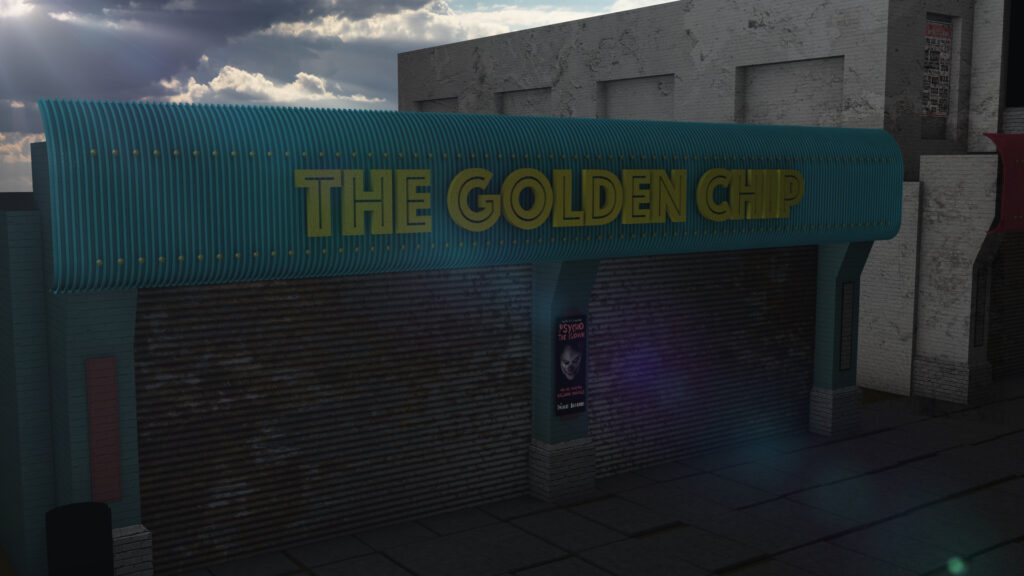
My family used to own a holiday chalet in Scratby (the original name for Wits End) in Norfolk. But my visits there were often with father, off season, so he could carry out repairs and decorate the chalet. I would often be left to my own devices and (this was roughly 1980 when this film is set) I’d wander off on my own and explore. Hence my love for closed down, off season seaside resorts. The weather was often hostile, the holiday facilities were often run down, shops were closed, many boarded up for the winter. I guess it was my own UK version of the Overlook Hotel. It was creepy, empty but at the same time exhilarating.
But unlike the Shining, my father didn’t turn into a psychotic axe murderer. My father was a quiet gentle man with a great, often dry, sense of humour. And at the end of the day, he would treat us to fish and chips which would be the highlight of my day. We’d buy them in Ormesby St Margaret which was a 10 minute car ride away. Despite it being called Ormesby Fish and Chips, my father would always refer to it as The Golden Chip.
Great memories. Miss ya dad xx
Wireframe and why!
I’m working on a big sweeping shot from the foyer of the Twilight through to the auditorium. It’s one of my biggest shots so far in one take and brings with it a variety of challenges and workarounds.
The biggest challenge involves the strain I put on my computer. The greater the strain, the longer the rendering, the longer it takes to complete. Good workarounds can not only radically reduce the time it takes, but it can also open up more possibilities and options in your post production workflow.
For example, the video below shows the shot I have in mind. At this stage I’m refining the movement of the camera shot as it pans around. This is easily done with keyframes – you do a start and end position and then tweek the journey in between making adjustments. However, seeing if it works is a challenge as the scene is so object heavy, its hard to get a smooth preview – it just jutters from frame to frame. One really needs to render it to see it at proper speed. Rendering in Wireframe is a much faster option.
I think when it comes to full rendering I shall use lots of object buffers and perhaps do two versions of the render, one of just the lobby and another just the auditorium. Stacking them together on After Effects will allow me to control the two rooms separately in post production – allowing for greater control on the final edit.
STOP PRESS
My recent work on the Twilight’s auditorium now confirms it as a 98 seater!
Liminal Space
My latest enjoyment is “liminal space” defined as “the physical spaces between one destination and the next.”
Since 2019 /liminalspaces has been a popular thread on Reddit
This is a clip of an animation I’ve been working on, based on a “creepypasta” called The Backrooms.
In my version there is a little twist at the end.
The Twilight Backrooms from Tranquility Base Presents on Vimeo.
Quick tip for keying
I ran into a problem trying to key out the greenscreen on a character who already had bits of green in their costume. There is actually a simple solution and I share it here on this, the latest episode of the Twilight Ballrooms Movie Diary!
Psycho The Clown is official
As you know, the Twilight Ballrooms film has been a labour of love for me for the last 10 years and will continue to be so for many years to come as I’m only half way through. The reason it takes so long is because I am doing everything from writing, acting, directing, scoring, grading, compositing, 3d art, editing etc… this list goes on.
However there are one or two bits in the project which are not me. Buster Cristo’s car comes from a royalty free 3d object online repository. The sweet wrappers used in Mrs Kepelwicks shop (which I don’t think are in view anyway) came from a lovely fella called Jason Liebig (who collects sweet wrapper images on Flickr) and who gave me permission to use them. And this week I got kind permission from JP Pirie. Users of Snapchat may well have used his masks on their snapchat pics. It was one of his masks, Clown O Freaky, that I used (along with my face of course) to create the posters of Psycho The Clown. Not only did he give me his permission but even had a quick butchers at the website and was really encouraging with his comments. So, many many thanks JP Pirie!
Wits End Archive
This unique archive footage taken in 1979 shows the dilapidated state of Wits End. The footage was kindly donated to us by the Tour Guide of the closed Twilight Ballrooms.
Of course Wits End is fictitious. And any sharp eyed seaside fan would realise straight away that it’s Blackpool. And naturally it wasn’t filmed in 1979 but over 40 years later. Effects to degenerate it include saturation reduction, augmented green and red channels, white noise, dust and specks (created using fractal noise and random seed at 25p/s). And not to forget the fantastic Video Copilot Twitch plugin (the only plugin that WAS used mind) plus various other tweeks here and there. Weird, I used to dream of having a good HD camera 20 years ago and here I am with great footage degenerating it. Funny ol’ world.
The Planets
Planet textures
Hope to publish soon a montage of planets I’ve been working on with my son. But I thought I’d share any easy tip today for making your planet look unique. Go to Google maps and, in satellite view, screenshot an area of terrain. The one shown below here was around China!
Now the only drawback of using this as a texture is the poles won’t be seamless and you’ll see the join. But the easiest way to solve this is to just not show those sides of your sphere when you do your composite. Then using After Effects, make the image black and white and then using levels tweak the image to something as shown below. This will become your bump map.
This will be a desert planet so no need for glossiness or reflection. And this is the result!
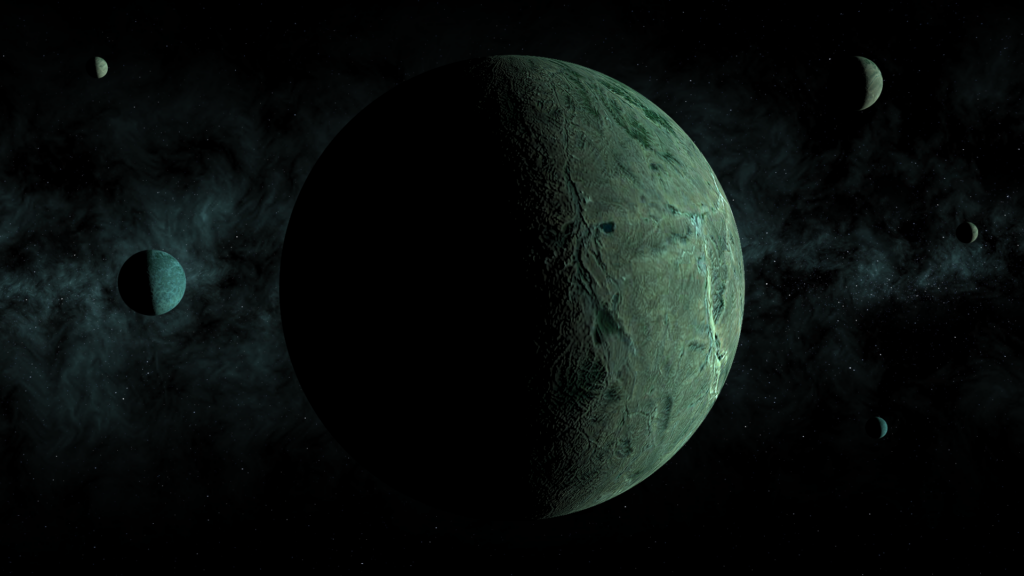
Stay tuned for the montage coming soon. Still have to do the music for it too!
Fadr
There are many ways to isolate vocals from a song. The results vary and can rather depend on your source material. For example if you have an instrumental of the same track you can “invert” that against the original. Mathmatically speaking, it’s the original (with vocals) minus the instrumental (without vocals) equals the vocals. And this effects can be done easily on open source (free) software such as Audacity
If that fills you with dread then don’t be put off – there is a much simpler way. Whilst the result won’t be perfect, this method will certainly allow you a rough separation of vocal and instrument without the need for the instrumental track and as easy as clicking a button. The algorhythms (yes deliberate misspelt pun) on Fadr.com are pretty impressive. Not only can it split vocals from drums, guitar and keyboards into 4 different stems, it also tells you the key of the chord being played and attempts (far from perfect mind) to convert them into midi tracks to help you get started on your DAW (Digital Audio Workstation)
If you’re a budding amateur muso like myself, you will be fascinated to listen to the accompaniment of many tracks without the distraction or noise of the singer. Also perfect for remixes. Free to sign up. Have a play and try not to get addicted.Fadr
I love a good instrumental as one of my Spotify playlists demonstrates.
Bit o’live piano
This is “Dexter’s Tune” by Randy Newman – from the film Awakenings (1991).
It is the only time I’ve ever watched a film and had to return to the cinema the same week to rewatch it.
Latest Twilight Trailer
For more info visit The Twilight Ballrooms official website.
For behind the scenes news click here
You can listen to the original music by me on Soundcloud click here
Synthwave Art
Wikipedia says “Synthwave (also called outrun, retrowave, or futuresynth) is an electronic music microgenre that is based predominately on the music associated with action, science-fiction, and horror film soundtracks of the 1980s. Other influences are drawn from that decade’s art and video games.”
So, think Tron meets Bladerunner. The colours are usually neon lit or based on old computer graphics. There is quite a nostalgic sometimes melancholic quality about these graphics. Themes usually promise adventure and reward in a brave new electronic world whilst using quite basic shapes and perspectives. The accompanying music is almost always synthesiser with artists like Vangelis, Tangerine Dream and Jean Michelle Jarre. Indeed I listened to the entire Equinoxe album by JMJ recently (listen to Part 5). For electronic escapism it simply can’t be beat.
I hope to try and compose some original tracks in the future of this style. But in the meantime I’ve used a two minute excerpt from an apt song by Pet Shop Boys called “This Used To Be The Future” – a great song featuring Human League’s Phil Oakey and vocals from BOTH Pet Shop Boys. The song was never released as a single so I’ve created an unofficial video using a montage of some of my Synthwave Art clips. Enjoy.
Covid 19
Farewell to Flash
In the early days of the worldwide web many sites looked, by today’s standards, ridiculously simplistic. Text and pictures displayed often with little style design and using default fonts from the computer they were showing on. Video was almost impossible to show. The competition was on to fulfil peoples webdesign needs and it wasn’t long until one serious contender came up.
Adobe Flash, with the release of a language called ActionScript, allowed people to embed their designs in a swf (shockwave flash) This opened up a world of possibilities including video streaming, animation and embedded fonts. It wasn’t long before any site looking to the future would embed an swf on their html and boom….a great looking website. And Tranquility Base was one of those sites.
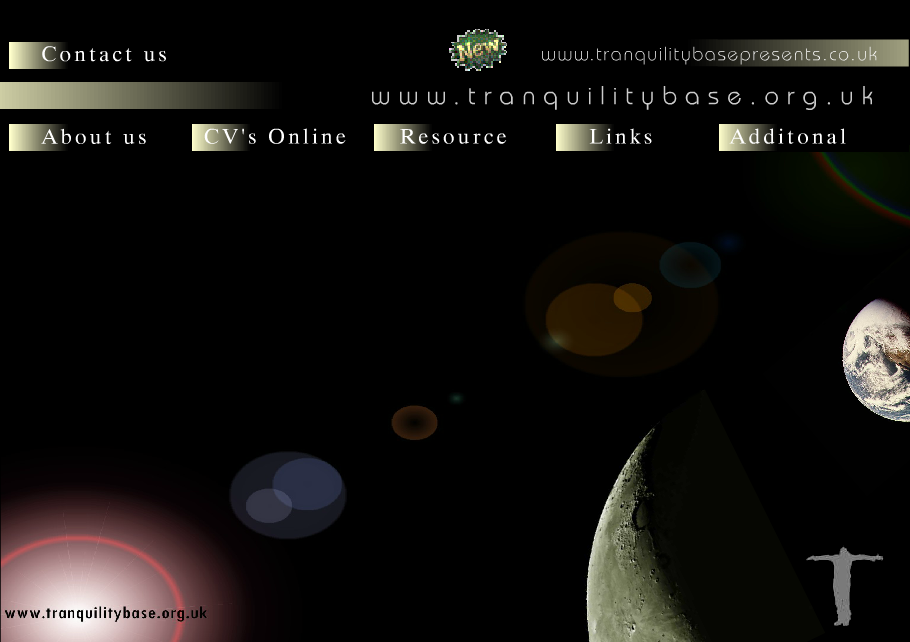
Note the site was going through a name transition
What you saw was what you got and animation was made possible with a timeline in the swf builder Adobe Flash (now Adobe Animate). Video files were often in .fla format and if memory serves me right, early YouTube used this format. For a novice such as I things got more complex than I thought necessary with the introduction of ActionScript 3, but for game designers it was a necessary evolution.
As a webpage format on desktops, Flash Player was a great asset. But by the birth of the smart phone and tablets, cracks were beginning to show. Flash players weren’t battery friendly and many companies opted not to include the player on their operating systems. In an open letter in 2010, Steve Jobs pretty much sealed the player’s fate saying that Apple’s iOS had and would never use the player, opting for HTML5 as the way forward. And that was that.
It’s now 2020 and Adobe has announced the End Of Life for Adobe Flash Player, even for desktops. Safari stopped using it a while back and after the New Year, we’ll witness its demise.
Can’t help feeling this end of an era is a shame. Nothing has really come along since that has given the amateur web designer so much possibility and dynamic. Everything since 2010 has felt like a big step back and even Adobe Muse was shortlived. WordPress and Drupal are good but slow evolutions and again don’t offer the wealth of style that Flash did. Maybe I’m just getting set in my ways which isn’t good in such a fast evolving environment like the internet. And I’ll always be sentimental for yesterdays.
YMCA
Tranquility Showreel
“Tunnels & Spheres” – This year’s showreel, much of it courtesy of a lockdown and extra time on my hands. Everything here is by moi, including the music!
Moving clouds tutorial
This is the first movie diary entry where I actually share a good tip in post production. And it’s an effect I use a lot in the Twilight Ballrooms movie. Parallax with a 2d photo. Making a static pic of clouds come to life with a good 3d optical illusion. And its simple. CC Slant.
I do mumble a bit when I don’t have a script so I hope this isn’t too dull an entry, but if you’re a PostProd nerd like me I think you’ll love it.
The Sun Always Shines on TV
I was extremely late to the party with this song, only hearing it for the first time ever in March 2018 (The radio was seldom on in my childhood house) and I fell in love with the track.
Two years later at the start of lockdown I was trawling through YouTube and found the isolated Morten Harket vocals. I couldn’t resist the opportunity to unofficially team up with such a great singer (whether he wanted to or not) and decided to try my own version of the accompaniment. And this is it. Best listened to on headphones.
The track is the first to be mastered on my new DAW and took about 3 months, which seems long but was not helped by the new iMac arriving over a month late, increased parental duties caused by lockdown and learning how to use Logic Pro. Also I started subscribing to Roland Cloud which is a MASSIVE library, yet amazing value for money. Another post on that later but for now I will say this track includes among others a Roland D50, Juno 106, TB-303, an Emulator II and a Korg M1 – all classic 80’s synths!
If you’ve found this page by chance and you happen to know me back in the 1980’s or 90’s, then this track is dedicated to you!
Literally, a blast from the past!
Movie Diary ep8
When baking goes wrong
We are currently in Week 8 of the Covid 19 lockdown and on a more optimistic note, I’ve made about three years worth of progress in that time on the edit. But it’s not without it’s trials and tribulations. Here below we see the Box Office I drew a good 7 years ago. I’m now at the point where I need to use the model for some shots and am tidying things up. One of the tools I’ve been using recently to speed up modelling was importing from C4D into Element 3d – the excellent plugin from Video Copilot – which can handle basic 3d models much faster in After Effects than C4d and is excellent for constructing the final composite of the shot you wish to use.
But sometimes it goes awry. And when it does, it can go almost surreally awry as seen below. The top image is how it should look and the bottom is how it looks using C4D’s bake feature.


I’ll take this point to also give a shout out to two very useful free plugins for C4D – SteadyBake was very useful for exporting my 3d Fuse/Mixamo characters from C4D to After Effects. Also worth a mention is DropToFloor plugin which does exactly what it says on the tin – levels selected polygons/models to ground zero so to speak – a big timesaver and essential for avoiding glitches in later import/exports of your model.
Doris Kepelwick
Lockdown: An important message from the
Twilight Ballrooms
An important message from the Twilight Ballrooms – released at the start of lockdown.
More can be seen at www.thetwilightballrooms.co.uk
Or see the unofficial Chinese Man version
Test titles!
Twilight Online
Get a flavour of the new film from Tranquility Base Presents by visiting www.thetwilightballrooms.co.uk – listen to some of the music, check out some of the scenery and read about its blighted history.
Then thank your lucky stars you’ve never been there for a holiday!
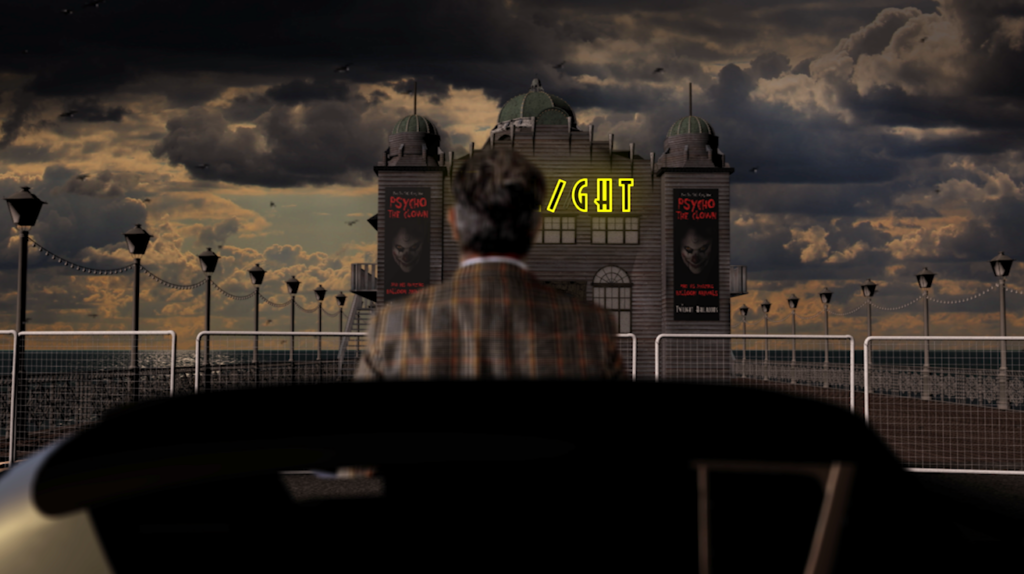
If you check the site out during the Christmas period you’ll see a festive looking Ballrooms.
Virtual studio
With both kids at school I’ve recently got my mornings back, which has meant that I’ve been able to have some time for myself and indeed the project. And when they went away for a week during the Summer holidays, I was also able to get some filming done. Currently I spend my precious free time working on the pub scenes in the film.
Working with a virtual set has many benefits. It’s cheaper which given my zero budget is always good. And the pressure to shoot on location and get everything right first time is also eliminated. A virtual set allows you to take your time to experiment and play around when it comes to camera positions and angles.
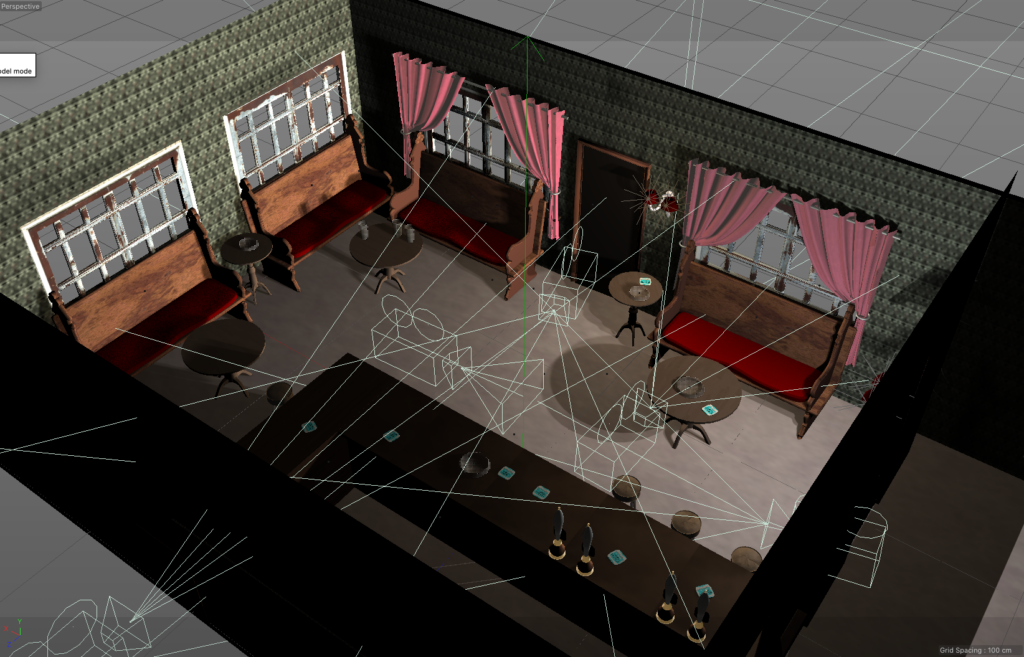
You can take your time getting the lighting right, take down walls if your camera angle requires it, take multiple retakes if necessary, takes care of props and continuity and so on. And, as I discovered, you can rebuild the set as can be seen here with the entrance door reset between the two pews opposite the bar.
Orientation has changed too. The Twilight was originally positioned outside the left windows but this too has been rejigged and now appears over Mundesley’s shoulder at the right windows, making it more haunting and menacing for him as they appear over his shoulder (he is sat on the pew on the far right by the toilets) I think I will also add a porch with side entrance to cover the entrance door in the pub.
For the edit I have files dynamically linked between After Effects and Premiere Pro. I am still developing a good workflow for both with much scope for improvement, but more of that in a future post.
Tranquility Base is 50 today
And yesterday it was 50 years since they landed and uttered the (unofficial) phrase “Tranquility Base” for the first time!
The Tripods
The Tripods is a cult BBC sci-fi classic from the mid-80’s, a Satuday teatime tv trilogy which sadly got the boot after series 2. I, like many, was gutted and years later I’m still not quite over it. In fact only the cancellation of Channel 4’s Utopia has equalled the feeling. So as a kind of therapy I’ve recreated the opening titles using the brilliant original theme music by Ken Freeman
Sneak preview
Stranger 80’s
Old door to Ballrooms
I found the old front door of the old Twilight model today. Question is, should I incorporate it into the New Twilight on the pier or is it not in keeping and too ornate.
I’m stumped cos I quite like it. The original was not my drawing btw but from a royalty free library and then tweaked by me and placed in situ with the rest of the Ballrooms.
The clumpy stairs are definitely me though 🙂
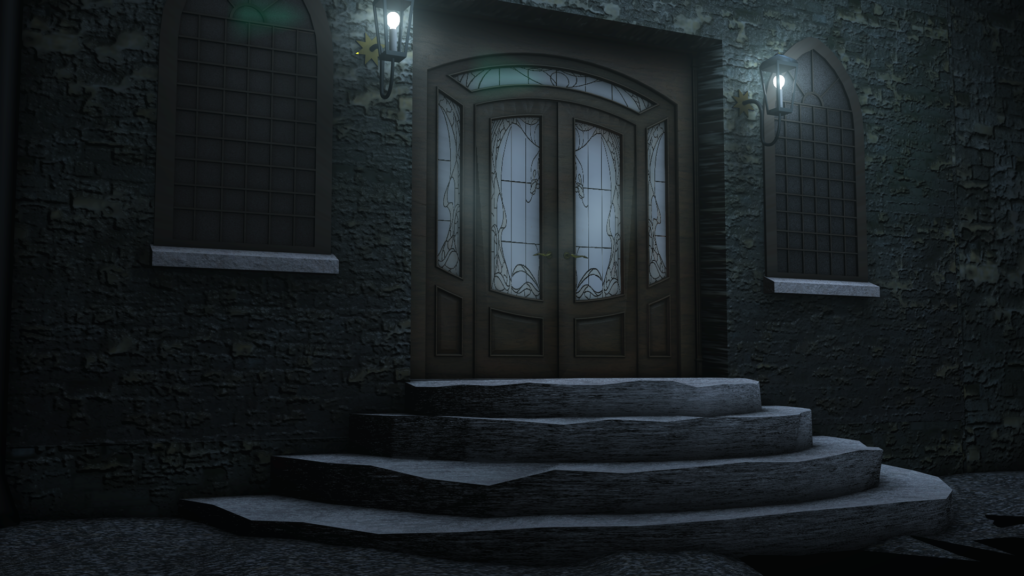
Doctor Whittaker
To celebrate the news that the next Doctor Who is Jodie Whittaker, I’ve extended what I did back in 2014 and have produced my version of the Doctor Who titles. The new time-tunnel is essentially a donut in Element 3d – check out this tutorial to see what I mean
More exterior shots
The history and evolution of the Twilight Ballrooms concept. From a house shaped theatre perched on top of a crumbling cliff to its final incarnation, a crumbling variety hall on a pier in Wits End.
This video will show the real life venue that inspired it – a venue that sadly burnt down almost 100 years ago!
POSTSCRIPT: This week, the end of Colwyn Bay pier collapsed into the sea. Eerily similar to the story. Full story here
Its hour will come…
Four Men in a Pub – Twilight Movie Diary
Since becoming a dad, the Twilight Ballrooms project has ground to a halt. That’s parenthood, there’s just no time to engage in the work required. So to sate your appetite and in a rare entry for the Twilight Ballrooms’ Movie Diary these days, I’ve decided to release this rough clip of an experiment I did a while back with a genuine scene from the film. The acting is rough, the cuts are crude but it was fun to explore the green screen environment (the set is CGI by me). It also explored the feasibility of playing all the parts myself – if I can brush up on the accents that is! (which, if you hadn’t noticed are English, Irish and Scottish for the pub regulars and American for Buster Cristo) This would certainly help save money as I can’t afford to pay anyone being a zero budget project, nor do I wish to exploit anyone’s talent for zero pay.
Also on a practical note, it would be easier for reshots and dubs! When I did A Life Of Brian (my first half hour project) my friends all worked for free. It was their 30th birthday present to me. However I only had them for a few days and in the proceeding months, during the edit, I was frustrated when I found I needed a link line recording or a clip redoing. I remember having to edit a conversation together from two recordings I’d recorded in different places and revisiting the location with my partner to shoot more clips. All of course without the actors. So this project, given its virtual environment, I’m rapidly coming to the conclusion that life would be easier and more flexible if I just play all the parts myself. Well, not ALL the parts, but more on that anon!
PramCam is here!
At the start of this year I became a father! As any parent will tell you, the new responsibility is a full time job. And that’s as well as the other full time job that pays your bills. Naturally, progress on my film projects and posts to this site have become few and far between. That is, until I realised on my walk in the park the other day that the pram I was pushing would make a terrific dolly. So I purchased a Joby Grip Tight and Gorilla Pod stand – basically a tripod for the pram and my iPhone. Then using the Instagram Hyperlapse app, had a go. The result below has been speeded up and stabilised even more with After Effects.
Sad day for Eastbourne
I visited Eastbourne for a photoshoot back in 2011 – for the Twilight Ballrooms project. I took many photos including many of the historic and famous Victorian pier.
Sadly the amusement arcade caught fire yesterday and completely gutted the first section of the pier. Many have said that it’s a relief the fire only took 30% of the pier but it will put the entire pier out of action for a long time and this includes many small businesses. It will also be a concern to many that, as has been the case with piers like the West Pier in Brighton, that follow up disasters can occur as the pier is effectively unmanned in the following months. Fingers crossed this doesn’t happen.
Doctor Who time tunnel
This is my first attempt at a Doctor Who time tunnel with thanks to Crawlerz and their excellent tutorial. (The music is from the actual TV programme to help it along!)
Solar Flares
The sound is from a YouTube video of an actual NASA recording of the sounds of Jupiter
New arrival
Post Office Tower Time Lapse
I do believe I put this on Facebook but for some reason completely missed the blog which, T-Base fans, really won’t do!
So here it is in it’s full, unashamed Koyannasqatsi rip off! Some of my first time lapses!
Creating a spooky theatre
True to form
What if…?
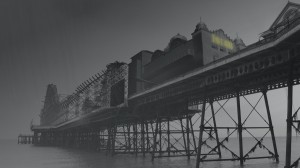 Have entertained the notion recently that the Twilight would look like a pavilion and it and the Rubicon rollercoaster, essential parts of the film, would be on a rotting pier rather than on the edge of a cliff. Radical I know. To help illustrate this I’ve done a rough mock up of what I mean. The Rubicon is at the back of the pier with the end part missing as per accident in 1973. The pavilion is a basic 3d model I’m working on based on the original pavilion at Victoria Pier in Colwyn Bay which itself was destroyed by fire in 1922 (the actual pier still stands but sadly has fallen into ruin). The pier structure used in this composite is a photo I took of the pleasure pier at Eastbourne. Click on the picture to enlarge.
Have entertained the notion recently that the Twilight would look like a pavilion and it and the Rubicon rollercoaster, essential parts of the film, would be on a rotting pier rather than on the edge of a cliff. Radical I know. To help illustrate this I’ve done a rough mock up of what I mean. The Rubicon is at the back of the pier with the end part missing as per accident in 1973. The pavilion is a basic 3d model I’m working on based on the original pavilion at Victoria Pier in Colwyn Bay which itself was destroyed by fire in 1922 (the actual pier still stands but sadly has fallen into ruin). The pier structure used in this composite is a photo I took of the pleasure pier at Eastbourne. Click on the picture to enlarge.
Let me know what you think and whether the new look Twilight could be the way forward. Is it spooky or dangerous enough? Does it make you want to know it’s story, especially the collapsed roller coaster at the end? Feel free to add comments below. More composites to come!
Doesn’t rain but it pours
We have recently had a heatwave in London and along with the great weather comes other extremes, namely thunderstorms. Having not posted much of late, I thought I’d try and win favour back from my readers with a freebie. Here is a royalty free clip (not for resale) of it raining heavily to add to your sound library. Wow I hear you cry, but that’s not all! At 31 secs into the clip there is also a cracking piece of thunder (literally)! It happened right above my head and I thought the distortion would be too great, but it’s actually turned out nice. Download file here
Every great day has its end!
New Pope elected – Exclusive!!
Happy 10th Anniversary
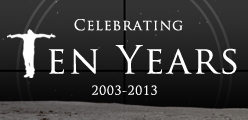
Happy New Year, but also Happy Anniversary. Yes can you believe it, 2013 marks the 10th anniversary of Tranquility Base Presents. To mark this milestone, I’ve put together a short film documenting the slow but steady evolution of this, my film making website! From the first ever shots with a webcam up to todays experiments with computer graphics and post production and the bits in between! Plus some previously unseen footage (lucky you!) I’d like to dedicate this film to all those who have got involved with the projects! Enjoy and Happy 2013!
Let it snow!
Twilight Movie Diary – E05
 Recently got into a new site called Pinterest. I found the app version and downloaded to me iPad. Now I’m hooked. It allows to pin most (more or less) pictures on the internet into a folder on Pinterest. So if, you’re doing some compositing on FOG (see below) you can collect a folder of other peoples images to inspire you. Just inspire mind, no stealing! And I was inspired, though it’s your decision whether I actually got a decent foggy composite, rather than just a bleached effect!
Recently got into a new site called Pinterest. I found the app version and downloaded to me iPad. Now I’m hooked. It allows to pin most (more or less) pictures on the internet into a folder on Pinterest. So if, you’re doing some compositing on FOG (see below) you can collect a folder of other peoples images to inspire you. Just inspire mind, no stealing! And I was inspired, though it’s your decision whether I actually got a decent foggy composite, rather than just a bleached effect!
Experiment in 3d Importing
What Time Is On Their Minds?
Been on holiday and, having spent all my savings on Pro Tools have naturally spent my time trying to get to grips with it (who needs to get away like I did this time last year)
I’ve always thought the KLF’s “What Time Is Love?” sounds rather like Lloyd Webber’s “Heaven On Their Minds” so have used this opportunity to let the two clash! Vocals are Jerome Pradon’s taken off YouTube. I’m very pleased with the result of this experiment, not least Pro Tools elastic sound editor which allows you to stretch samples to fit the beat. Marvellous. Other samples used here are Wanda Dee’s infamous sample from “To The Bone”, Mantronix’s “King of the Beats” (also used on Snaps classic “The Power”), Shed Seven’s “Disco Down” and more from Jesus Christ Superstar as well as Apple and ProTools samples and instruments.
Also worth a mention here is a great site I’ve found called Who Sampled – here you can find the sources of most samples from Kanye West to FatBoySlim. Very interesting AND educational!
Happy Halloween
Happy Halloween from Tranquility Base!
10th Birthday in 2013
Next year Tranquility Base will celebrate it’s 10th Birthday! So if I find anything of historical value from the archives I shall stick it on the site. First up is the original T-Shape which was designed by Alex Treadway. Here are some of the original photos used. The plan (oh so many plans!) had been to do a short film about a stand-up comedian who bombed. As he took his bow it would become the logo. So earlier plans had been of this ilk, until towards the end of the shoot we tried the now infamous “Tadah!” shot which won the day! I was in my late twenties when these were taken, long before I decided to dye my hair grey and deliberately put on weight!




Twilight Movie Diary – E03
Pro Tools
Have been playing with the 30 day demo for Pro Tools. Alas, all good things must come to an end. I do hope to raise the cash to buy this or if anyone’s feeling generous they’re welcome to buy it for me. It costs about £500, but compared to Logic, Cubase and Garageband, it’s worth every penny.
Here are two little clips done with the software. (Quite pleased with the second one, might develop it when I get said software)
Artwork finally makes it home
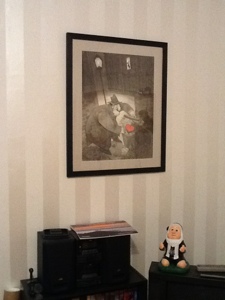 The day has finally come! Now the works have finished in my flat I could finally collect and hang the picture I purchased earlier this year from Uli Meyer, pride of place above my telly. Indeed, I imagine many a TV program is now doomed as it will inevitably steal my gaze.
The day has finally come! Now the works have finished in my flat I could finally collect and hang the picture I purchased earlier this year from Uli Meyer, pride of place above my telly. Indeed, I imagine many a TV program is now doomed as it will inevitably steal my gaze.
The piece is called “Trashed”
First ever make up test
The lead character in this movie will be played by yours truly naturally. Have taken time to start creating the character in the flesh and this included a trip yesterday to Charles Fox make up in Covent Garden. I was dreading the visit, knowing nothing about makeup. But the staff could not have been more helpful. I bought a moustache and have just tried it on. Here’s a quick vid. Have also darkened the eyes to give a jaded cynical look to the character. The moustache requires special makeup glue. I was surprised how strong and flexible it is. To take it off you apply special thinner. The whole lot came to about £30. But I think it’s essential the character has a moustache because it helps him look creepy, slimy and manipulative.
Twilight Movie Diary – E02
Tranquility Wifi
Nothing excites me more than that feeling of realisation that you can do something and it’s much simpler than you think. One such things I discovered last night. Using my phone’s 3G to connect my iPad online. And what’s more it’s wireless. My humble Galaxy Ace has under tether settings, something called Mobile AP, which believe it or not doesn’t stand for Anthony Pearson. Actually it stands for Access Point and it turns your phone into a mini wifi hotspot. I can even connect my walkman to it!
 To prove it’s use, I am doing this entry at my local pub on my iPad, which only has wifi. The 3G access is from my phone. And here is a picture of my food. I did want to test it somewhere more remote like the top of Primrose Hill but it has been chucking it down all day.
To prove it’s use, I am doing this entry at my local pub on my iPad, which only has wifi. The 3G access is from my phone. And here is a picture of my food. I did want to test it somewhere more remote like the top of Primrose Hill but it has been chucking it down all day.
This post was also done using the official WordPress app which I also have on my Android phone. I know what you’re thinking….why not just do the post from my phone. But all this typing would have much more fiddley. The app is great for posts and pages, but not so good for anything else like media management, CSS and plugins etc…
Uli Meyer Studios
Today I had the privilege of being given a personal tour round the animation studios of Uli Meyer, a local based artist here in Camden Town. He has worked with big animation companies such as Warner Brothers, Touchstone, Disney & Universal to name a few. But it is his collaborative work with the late Ronald Searle, creator of the infamous St. Trinians School, that appears not only to be a personal highlight of his career, but a heavy influence on it.
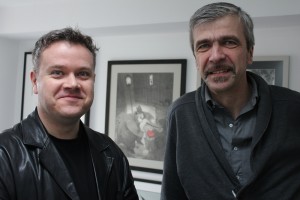 His studio (for an artist) is incredibly tidy and organised but there is no doubt who rules the office. The characters themselves! Sketches, models, huge ink drawings all portraying the most fantastic clan of animals, ghouls, misfits and eccentrics both good and evil. Each character, like Night At The Museum, is frozen still by the arrival of us real people, but when the office lights are out, I imagine they run riot like Gremlins.
His studio (for an artist) is incredibly tidy and organised but there is no doubt who rules the office. The characters themselves! Sketches, models, huge ink drawings all portraying the most fantastic clan of animals, ghouls, misfits and eccentrics both good and evil. Each character, like Night At The Museum, is frozen still by the arrival of us real people, but when the office lights are out, I imagine they run riot like Gremlins.
The studio is large and certain areas dedicate themselves to specific tasks – video editing, modelling, computer graphics and sketch room. The hallway serves as a gallery and hung on the stairs is a picture I’ve seen before. I’m here to purchase it and am relieved that it’s not been snapped up before my arrival today. The picture shows a tramp finding a discarded heart in the dustbins. In the background a silhouette at the window is heavily quaffing a bottle of wine. Though there is no title on the frame, Uli’s eyes light up when he tells me the title. “It’s called Trashed“. The picture is part of a series of similarly themed pictures, by Uli, based on the universal theme of love. Other pictures from the series are also in the hallway and all feature a bright red heart, the only colour in these great ink drawings.
Do check out his blog which shows some of his amazing artwork, some completed, some in various stages of evolution! Now I can’t wait for the building works in my flat to complete so I can take this, my first ever piece of purchased art, home to hang on my wall.
Time Flies!
Anyone who doesn’t know, my flat is undergoing extensive repairs since a flood last November… and yes, it’s STILL going on. So I’ve been quite preoccupied with that on what feels like a full-time basis. I’ve also been doing lots of web-design favours for friends. So what I’m saying is basically it’s been a while since I last blogged. But before you get the violin out…no don’t… there have been some exciting stuff going on too. Like I’ve purchased a Zoom H4N for sound recording…more experiments from that anon…stay tuned viewers. Also a NAS drive, more or less my very own 3TB cloud, though it’s video streaming leaves a lot to be desired thanks to Seagates badly designed app. However, I’m not disheartened as knowing the geek community it won’t be long before someone releases a better one than Seagates miserable effort.
Anyhoo, here’s a video clip. Pretty basic….
…except that that was originally just a photo!
The flies are created using the png on the left with a particle system, whilst the clouds are used moving masking and a simple skew. Skew is better than simply moving the cloud layer as it allows the clouds at the top (and therefore nearer) to move quicker than the clouds at the bottom (the ones further away nearer the horizon) A simple technique yet very effective. Considered adding a lens flare but thought it might be overkill. Sometimes simple is best.
The Rubicon
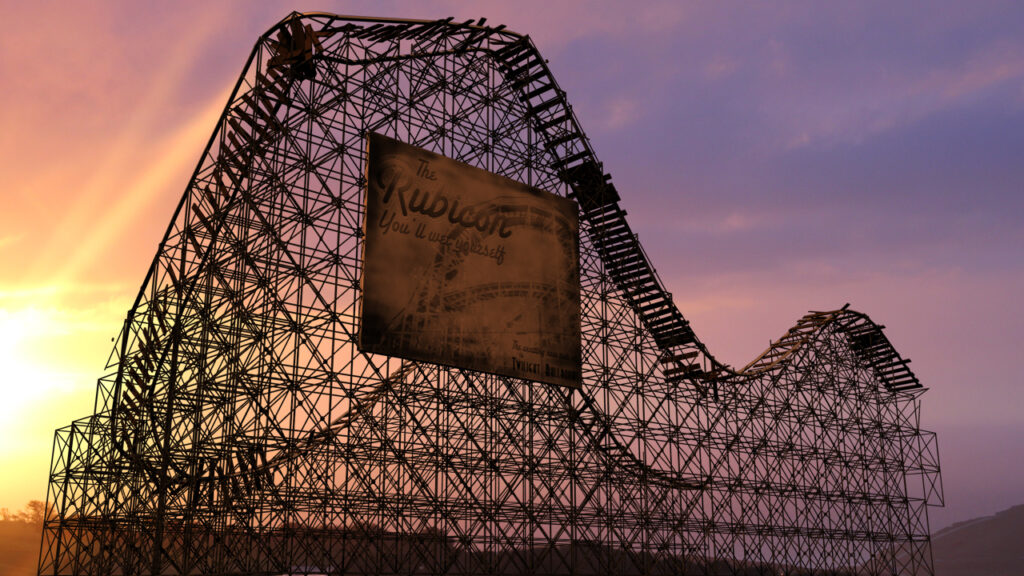
The latest picture of the Rubicon rollercoaster. If you don’t know the history of the Twilight Ballrooms and the dreadful accident that happened involving this rollercoaster on Saturday 26th May 1973 then I suggest you visit the history section on the website, www.thetwilightballrooms.co.uk and brush up on your knowledge!
Seasons Greetings
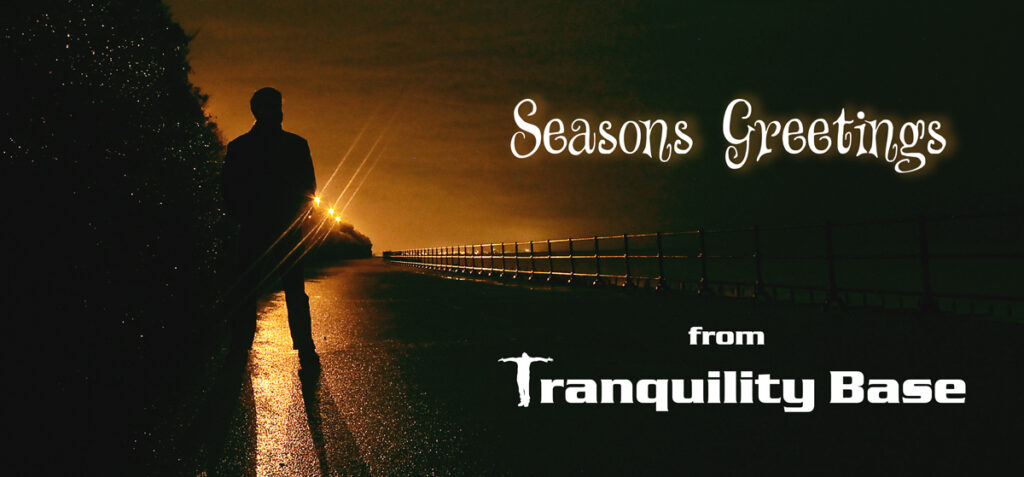
Wishing you all a very wonderful Christmas holiday. This pic was taken in practical darkness using an 8 second exposure. The bright orange glow in the background is the light pollution from Eastbourne. Love the droplets of water on the bush on the left – very festive I thought! Click on the pic to enlarge.
Twilight Movie Diary – E01
Pre-production photo shoot
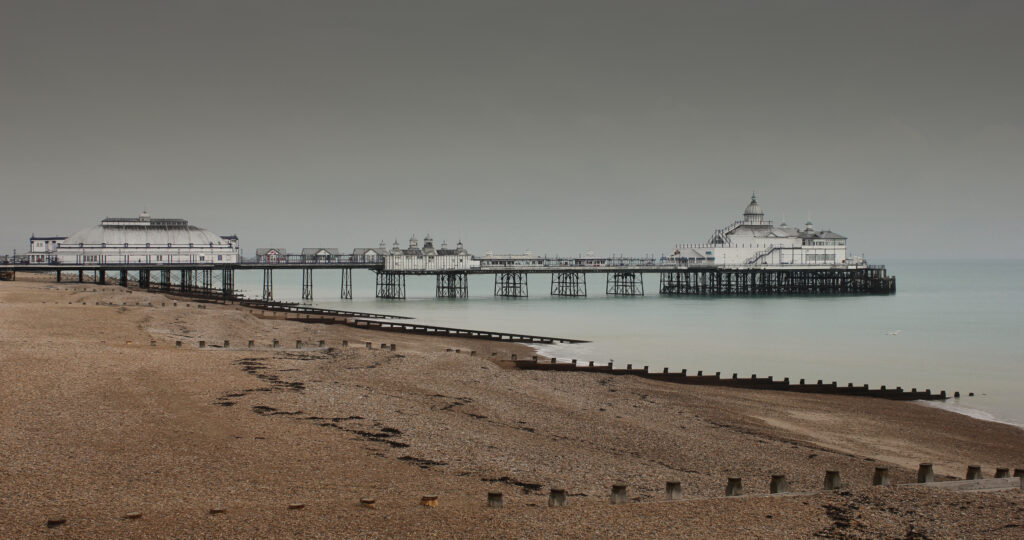
Had a marvellous few days in Eastbourne. Fought off the temptation to spend my time at tea dances and instead headed off across the South Downs taking in Beachy Head and a fab National Trust hamlet called Birling Gap which, for me, is the nearest thing in real life to Wits End I’ve seen so far.
The Downs were excellent, though you are reminded of it’s links with suicide (3rd highest suicide rate in the world). I met one of the chaplains, a group of volunteers who patrol that spot looking for lonely quiet individuals and offering to chat! Thought it best not to mention Wits End!
Now it’s back to the drawing board as I try and use the footage and photos I’ve taken to augment the project.
2011 – More than a dream!
I have been working hard, honest. The thing about pre-production and/or learning anything new is that at the end of the day, you don’t really have anything to show for it. Well, I thought I’d change that and have edited a quick montage of all tester clips and stuff generally marked on my hard-drives as “CANDELETE” – that’s all files that I create just to experiment and test an effect or process that I’ve just learnt. Other than that, the clip is usually redundant. After all, when am I going to need a tube train on the New York subway, unless they script a film called “The Taking of Balham 123”)
That is until now, where, before the files ARE deleted or permanently archived in that warehouse where the Arc of the Covenant also lives, they can have pride of place in this montage. Enjoy.
New character, new video!
Latest from Wits End
Pre-production on the Twilight project has now taken half a year and may take another year or so at this rate. It’s slow but I’m learning so much. However, I am going to have to take some shortcuts, especially with the drawing, which ain’t necessarily a bad thing. Have found a new website called http://www.archive3d.net/ which has a huge repository of models and shapes which will help me in leaps and bounds. And they’re all royalty free and free to use commercially, which means I can use and adapt them for the set in my film.
Thanks to this I have made excellent progress drawing the managers office in the Twilight (complete with rehearsal piano). I had already made great progress with the auditorium and stage (including the Wits End Mighty Wurlitzer), Mrs Kepelwicks Village Store, The Severed Arms and the front gates. I still have corridors, fire-escapes and the main entrance/box-office to do and no doubt other bits and pieces which I won’t go into now. Once that’s all finished there will be fine touching, painting and compositing to do, not to mention experimenting with the greenscreen and finding the look and feel of the film before I return to the script.
Looking forward to watching the LIVE show of The Twilight Ballrooms – I will be there on 7th August. Good luck to all those involved. The image of the exterior of the Ballrooms (above) wot I drew, appears on the poster of the live show! Yay!
On a downside, I’ve decided to loose the URL www.alifeofbrian.co.uk which finishes today. But don’t despair Brian fans (either of you) as the film will still be viewable on this site!
My first cover version!
Check out this cover of the song I wrote for David Garland Jones! They’ve even written some new lyrics!
Another Vanishing Point experiment
Visited my dad today and was browsing some old photos. This one is of the road I grew up in, though taken long before I was born I might add. As way of demonstrating the effect to my dad I’ve had another go with this pic. It’s only rough and distortion is quite visible towards the end, but still effective. The first 4 seconds are good
New dates for The Twilight Ballrooms (LIVE)
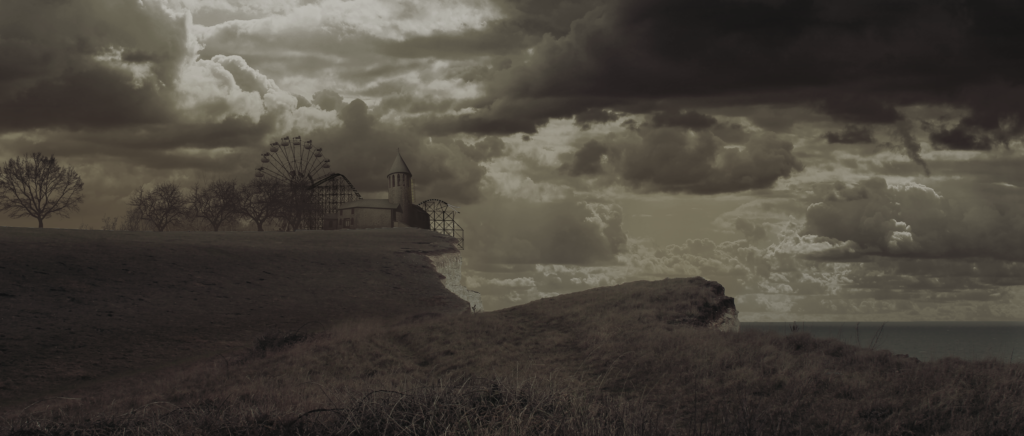
Whilst the movie project is called The Twilight Ballrooms, there is also a LIVE show with the same name. This is also written by me but is completely different storyline from the film which is set in 1980. The LIVE show is set in present day and is presented by the Ballrooms’ resident magicians Malcolm Marvelle – Master of Mystery and the lovely Rita! Other characters include The Butler James and The Roger McGuffin Holiday Dancers.
Originally called “Malcolm Marvelle Master Of Mystery and the lovely Rita”, it will be at the Curtains Up Theatre, Barons Court for the first fortnight of August 2011 at 8:30pm. More information including links to buy tickets can be found at www.falseimpressions.co.uk – The show which features live magic is produced by Richard Leigh.
Here is just some of the show’s posters that are appearing around the pub theatre.
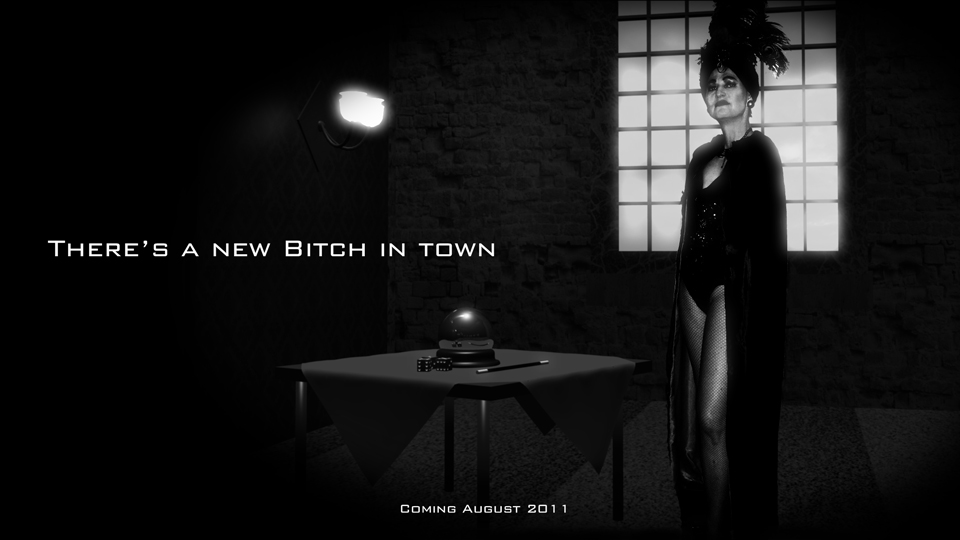
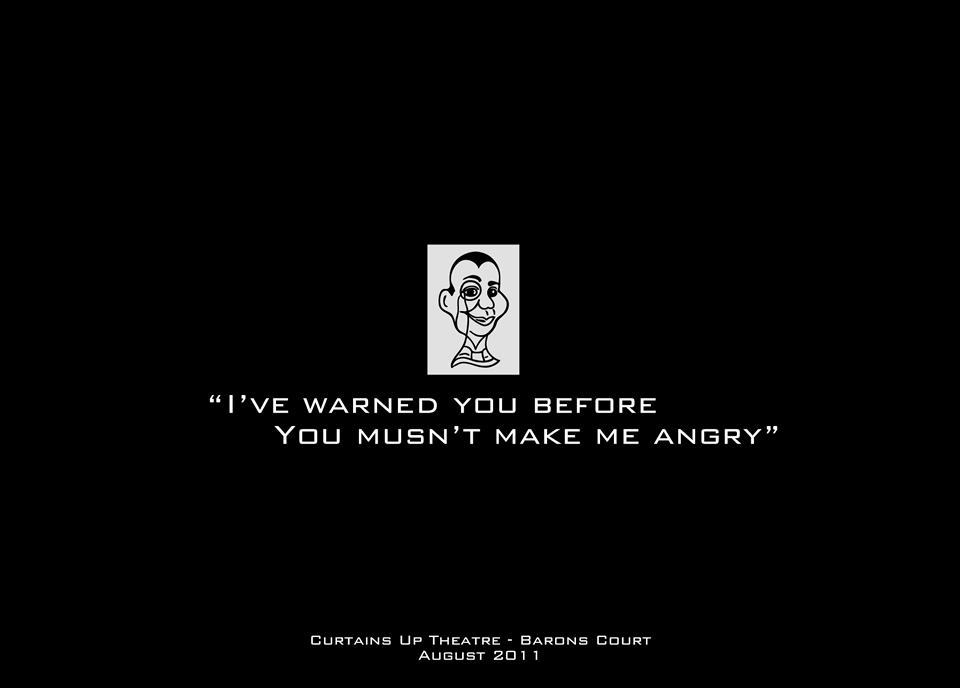
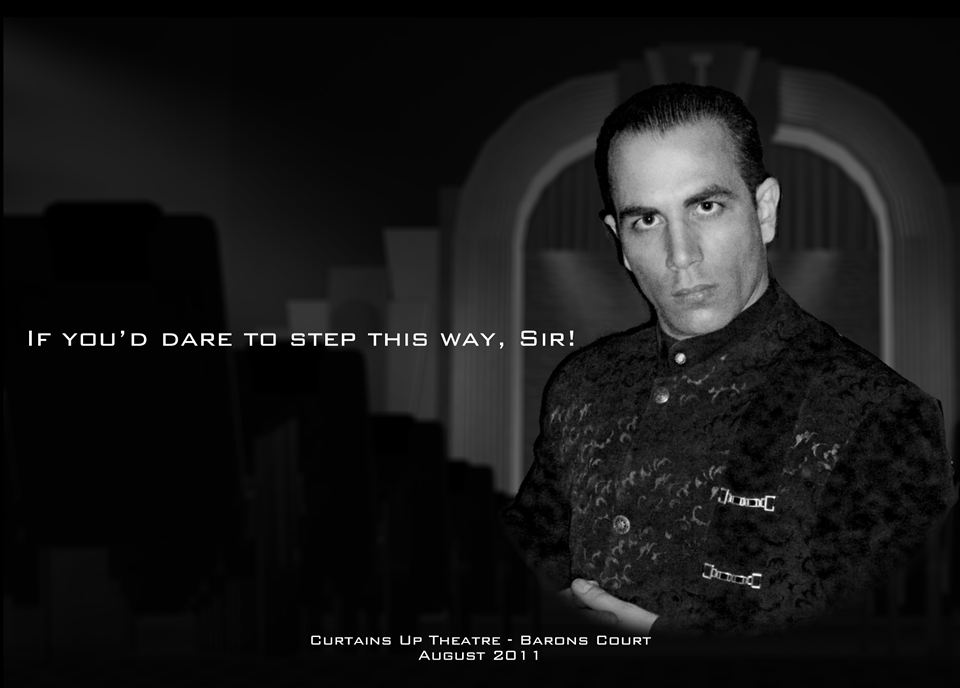
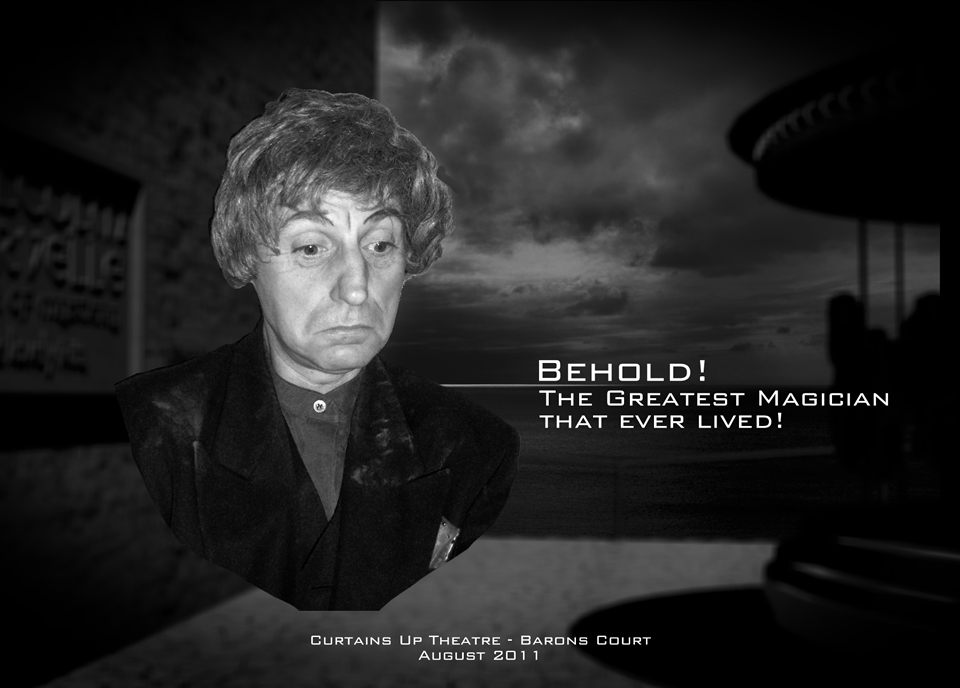
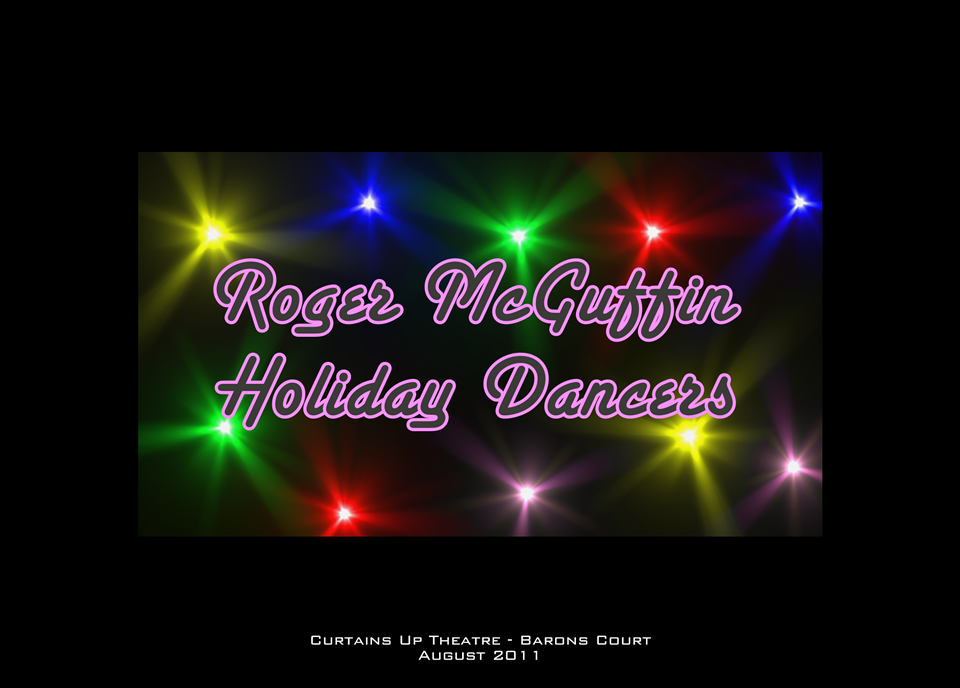
Vanishing Point
Experimented today with something called “Vanishing Point”. There is much you can do with this Photoshop filter which helps you edit a 2d photo in a 3d environment. One of the cool things is when you export it to After Effects. (Check out this tutorial from Andrew Kramer) By moving the virtual camera in the import you get this. If edited right it can look like a perfect faked dolly/crane shot. This one is just rough, but remember, the original is just a flat 2D photo. Can’t wait to try some more test out.
If anyone can…..
Today was a bit of a Red Letter Day for Tranquility Base Presents in general. After months of research and general umming and erring, I finally bought a new video camera. However, no ordinary camera. You maybe surprised to learn that I actually bought a DSLR – something that I’ve seen other enthusiasts do of late, even though I will primarily be using it for video filming. Yes, I chose the Canon 550d or if you live in the States, aka The Rebel T2i!
So why a DSLR. Well, for the same price as it’s camcorder equivalent, you get more manual control over important aspects such as exposure and focus, not to mention great depth of field. For the Twilight project I needed a camera that would respond well to greenscreen so exposure control was a plus. And don’t forget the ability to swap lenses too allowing extra features such as wide angle shots, great, detailed close ups, zoom without digital zoom pixelling and heaps more which I will, no doubt, discover as I learn to use it! All that and a great selection of formats to record video in – NTSC & PAL in 24p,25p,30p,50p and 60p, from standard to Full HD. Indeed, by most accounts and reviews on the Internet, Canon is the best for Video on DSLR. Just look at the numerous examples on YouTube and you’ll see why – others just aren’t good enough. And why have almost good when you want Red One perfect….well almost!
Everyone will have different needs when it comes to filming. I found this old post last January on the brilliant Video Co-Pilot website. Read it if you’d like a well written summary of your options.
There are naturally downsides – it’s polycarbonate body makes it a little vulnerable to any accident that may happen as well as susceptible to weather if used outdoors. But hey, that’s nothing when you consider its potential – and that’s precisely what I want to consider in the next month or so. No doubt, loads of demos and experiments heading this blogs way…. so bite me or humour me! Either way get ready, the Twilight Ballrooms is coming!
The Devil’s in the detail
Have completed this 3d model as part of the local village store. The sweet wrapper images were a real bonus and are courtesy of Jason Liebig from Flickr! Many thanks Jason.
The actual model may well end up as a blur in the background, but that would still be the case if I were dressing a real set. At least this way I don’t have to Flambar everything!
Panarup!
So the last few weeks have been a mixture of different Twilight related projects. Lots of 3d drawing, notably the top of the Twilight tower which has now been added to the Ballrooms. I have also been designing numerous posters from the Twilight’s history. I did something similar to decorate the set when we took the Twilight’s live show to Edinburgh in ’06. However, these new ones are far more superior, even if I do blow my own trumpet. The new posters not only appear in the film but are also needed for the new live show this August 2011. Indeed much of the current pre-production is dictated by Richard Leigh’s deadlines for set building for this show. It’s been great fun thinking up old variety act names (“The Wimple Sisters – There’s Nun like’em”). It’s also started making the Twilight come alive.
Today, to try something completely different, I’ve been working on manipulating 2d images to make a 3d aerial pan. Here is the result of my experiment. (Very rough, you can even see the edges of each photo, but you get the general idea)
Great tip – if you use the advanced search bar in Flickr you can choose pics that have a Creative Commons License, some even for commercial use! (IF IN DOUBT – ALWAYS ASK THE OWNER). Some of the pics in these shots were CCL but I hope to use original shots once I get my new DSLR. More of that anon!
Ray of Light (uncompleted)
Found this little gem from the Tranquility Base Archive. Kylie Vilcins plays “Adelaide” in the rather weird monologue shot around the same time as Starmaker (in which she can also be heard singing “I’ve got a lovely bunch of coconuts”) Although uncompleted, there is something appealing about the character. She reminds me of an Australian Kristen Schaal.
Softbox lighting
Bought 2x85W softbox lights and stands to use with my green screen from Amazon. There is a slight problem with fluorescent flicker but at the moment I’m putting that down to having a cheapo camera. It’s not too much of a problem at the moment anyhow as you can see in this demo below. The only faff at the moment is having to assemble and then dismantle all the equipment – you do need a lot of space for green screening, particularly because you don’t want shadow hitting the green, nor do you want green reflected onto the subject. Things should get a little easier once I get a camera with a wide angle lens, something my current cheapo camera lacks.
This clip marks my first official visit to Wits End where the film is set. As you can see, service at the pub is not great!
Old clips
Well, I have finally purchased dedicated web-space for this website and have spent most of the week moving files. Like any move you find items that you’d completely forgotten about. Here is one example, a trailer I did from 2006, to the Star Trek theme. Reminds me of the projects that were hot at the time!
My how times have changed, as this next clip will no doubt demonstrate too. It was skit that was part of a genuine campaign back at the 2005 general election (hence the crappy dry speech at the end). The music is original too. They say a week is a long time in politics. 6 years is a veritable lifetime ago!
Greyscale Gorilla & C4 Cafe
A blog worthy of mention, Greyscale Gorilla This one covers all my favourite subjects on Post Production, namely After Effects, Cinema 4d, Photoshop and others. Some great video tutorials (video tutorials are always the best) and a competition called the 5 Second Project which is very entertaining, check out the superb entries, inspiring stuff. All this done by a fella called Nick Campbell (he is the gorilla) from Chicago, USA. Nice one Nick!
As I explore the demo of Cinema 4d even more, I have subscribed to c4dcafe.com – who have some excellent tutorials too. However it took me 3 attempts to get my subscription accepted, (you can’t view anything until you have subscribed which is annoying) and once you’ve completed their rather interrogative questionnaire, they hint heavily for donations. I hope some day they take a leaf out of other sites more accessible walk-in setups and deal with their funding issues by advertising or selling their own products, such as my favourite site Video Copilot or indeed Greyscale Gorilla! Another brownie point for them!
Draft complete
Well, the Twilight script has now completed it’s first draft and is being re-written and tweaked as we speak. Am now exploring the feasibility of various things I would like to achieve in the film and that may take several months. I feel it is vital to tackle however – it will determine not only what I can achieve in the film but may very well determine the whole look and feel of the film.
My plans are to take the computer graphics a step further and make my set from them. It is after all much cheaper than building a set, and you can be more adventurous too as you’re not limited to space and budget. My first efforts in that direction this past fortnight has been drawing the local pub where some of the films scenes take place.
And here is the first draft…no doubt it’ll change a lot down the line.
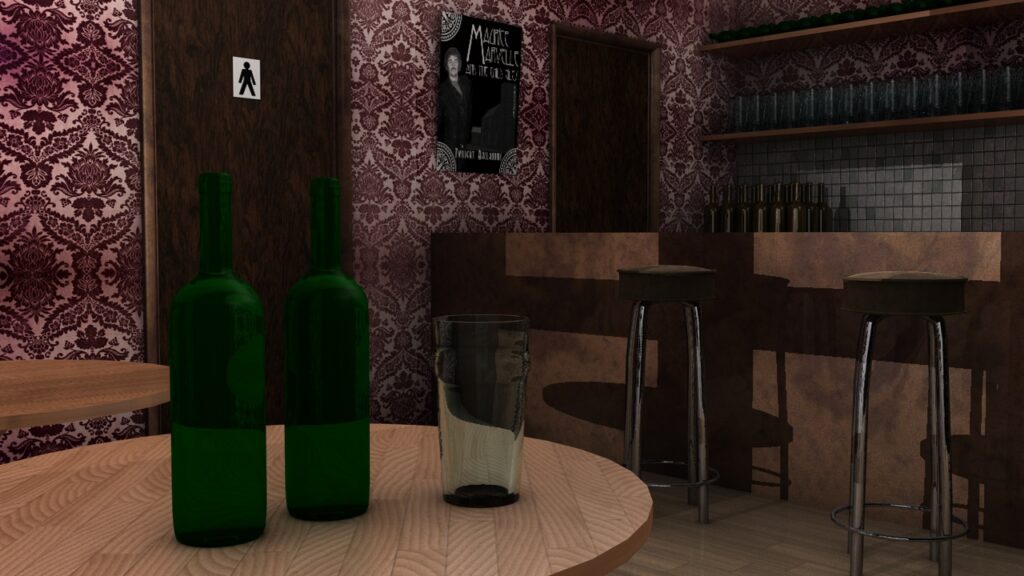
You can see already that the whole thing isn’t going to look naturalistic, there is inevitably a drawn theme to it. But that’s no bad thing. My thoughts are for doing a similar thing to the characters.
The difficulty will be getting the actors inserted into the set. Will post my tests on this blog later no doubt. Also, graphics like this takes a while to render (so have had to order more RAM – which may take 2 months to arrive, no thanks to Apple) And there is so much more I have to learn about rendering with decent light (Global Illumination, Caustics and Ambient Occlusion to name just a few) Oh, so much to do! I’m in Geek heaven again!
In the meantime, if anyone wants to give me money to buy a good camera (£700-£1,400) or some decent lighting lamps (£300) feel free. Cos I’m skint! (More on my search for those later in this blog too)
Photoshop tutorials
This year I hope to be able to incorporate mattes into my videos, especially with the Twilight project. For this I realise I will need to swot up on Photoshop and what it can do. There are plenty of good sites such as psdtut+ which I’ve mentioned before on this blog. Here is another. Nothing sells a tutorials site to me more than some great examples of what can be achieved and to this end, this site will not disappoint. Time to get practising.
If you’ve got any more great suggestions for good PS tutorial sites, share them here.
New domain
An impulse find led me to purchasing the domain www.actormusician.co.uk
Not really got any use for it at the moment other than I thought it was a bargain for £6. Just got it pointing to the music part of this website for the time being.
My dream URL of course would be www.tranquilitybase.com or tranquilitybase.co.uk – neither of which are in current use by their owners. Am trying to get in touch with aforementioned – fingers crossed they get back and say yes, that would make my decade!
Blink and you’ll miss it
There was a picture of me on the telly tonight. My girlfriend spotted the blink and you’ll miss it moment. It was on BBC2 doc celebrating 25 years of Les Miserable with Matt Lucas. There was a peripheral mention of “Oliver!” and up came this pic!
It was odd as I’d never ever seen this pic before! Even more weird to think this was 27 years ago! Check out the big radio mic on the Artful Dodger! This pic was taken at the Palace Manchester as the show was there before transferring to the Aldwych for a Christmas run in 1983. I remember this day as one of my favourite days ever. I travelled with my father (I was 10) and it was the first time I had ever flown on a plane or stayed in a hotel.
…and the lovely Rita!
Richard Leigh’s production of the live show wot I wrote “The Twilight Ballrooms” had a successful run at Jermyn Street last month and there is more to come in 2011. Michelle Roberts who plays what’s left of the “Roger McGuffin Holiday Dancers” took some great photos. These will be appearing on the Twilight Ballrooms website in due course. Meanwhile I was able to use one of the photos to create this demo poster.
Blowin in the Wind
Had a little learn and play with the Daylight System in 3ds-Max today. Made a little weathervane from scratch to render in it that I imagine would probably sit well aloft the Twilight Ballrooms main tower. Maybe we’ll see this shot again someday in such a context, though hopefully less plain looking (Come on, I quit Art when I was 12 years old. That’s what happens when your homework is pointlessly sticking bits of dry pasta to cardboard!)
And I’m excited about seeing Gareth Edwards movie Monsters soon. Saw an interview with him on the Culture Show the other day. The guy is doing exactly what I want to be doing (if only I had the money). He’s living the dream! And I want his big flat screen TV too. From what I’ve seen he’s really committed to the immense amount of work that is involved whilst coming up with some very imaginative stuff – though I’m pretty sure it’ll look low budget compared to my attempt here at a weathervane. Now they ARE scary!
Red Giant Software
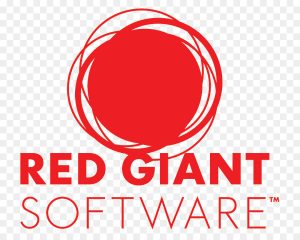
Not only a great selection of post-production software and add-ons, the website also has a great selection of videos and tutorials on how to get the best out of these products. From Grading software with fabulous presets, to lens flares, text effects (including the ubiquitous Matrix generator), vintage effects, state of the art video noise reduction, ray effects, keying software, oh to name just a few!
But Red Giant’s “Pièce de Résistance” is its Trapcode Collection of particle generators, most notably “Particular”. This effect comes in many forms and categories and Red Giant have been wise to subdivide its possibilities into various different versions of software. Also worthy of mention, and one of my personal favourites, was “Psunami” which is a sea generator like no other. Incredibly realistic, you can also have huge control over its environment including camera angles giving you the power to make some amazing effects which would only otherwise be possible shooting from a helicopter. In can take a while to render but its still significantly faster than doing it on 3d modelling software, and the wire mesh preview gives almost realtime rendering which is ideal.
So check out the website, the software, Red Giant TV and give their demos a try. It’s not so much whether you’ll buy something because you will, but more that you find the perfect solution from its vast array of offerings.
End of the World
Took a break from scriptwriting this afternoon and played with a picture I took (with just a camera-phone) last year whilst in the Big Apple. Would usually have just deleted an experiment like this but thought that now I’ve got a blog, I should post it.
Principally Photoshop with a dash of After Effects to animate it.
Movie Poster Font
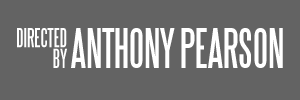
Give your movie poster a touch of class by using that font Hollywood uses on the base of all of its posters.
Download it free from www.abstractfonts.com
The small credits “Directed By, Written By, Produced By” etc… are all achieved using one lowercase letter shortcuts. There are also extras like DVD and Caption logos and much more. It couldn’t be simpler. Great stuff.
Mailchimp
Get visitors to your site to subscribe to your mailing list.
This is a great and FREE site. Mailchimp is the answer to your mailing list needs. It can help you set up a variety of forms such as mailing lists or questionairres; it’ll help you customise these forms with your own design and provide the code for embedding it in your own site; non-coders can get a link to their own page created especially for their form; it protects you against spam and webbot attacks and allows visitors to your site to subscribe/unsubscribe safely.It will let you plan email campaigns, filters results from your database and…..oh everything! OK, if you’ve a serious amount of subscribers and mailout every week, you’ll probably have to pay a premium to upgrade your service, but the limits for free customers are very generous and if you’re just starting out with mail management, then you can’t go wrong registering with this site. There are even plenty of tutorials and prompt boxes to help you along.
The Illuminati
Did this spoof trailer to take a break from web designing and also to revise what I’ve learnt so far with post-production. And also for a bit of fun! Thanks to everyone who was game for getting involved!
DGJ Remix
Congratulations to Welsh actor David Garland Jones who was booed off the stage at Goldie Lookin Chain’s gig in Newport last Saturday. They chanted “Who are you? Who are you? Who are you?” If they had checked the poster or bought a programme they would have known. He’s David Garland Jones.
Everything on HOLD!
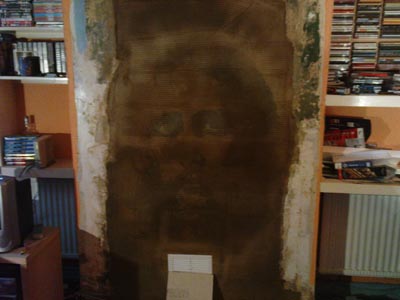
And I mean everything.
Had to dismantle all my equipment to deal with a burst radiator pipe in the wall. Dust and debris everywhere. And during the repair process, the face of Christ appeared in the wall, presumably in time for the Pope’s visit later this month. Shame its been plastered up. If I had charged pilgrims to see it, it could have helped to the cost of its repair.
Luck of the Welsh!
Working very hard on a few things. Have been redesigning Richard Leigh’s False Impressions website and still, yes still, been working on the the new Twilight site. I’m very pleased with how its turned out and can’t wait to show it off, hopefully next month. And have purchased www.actorcv.com
All in all a busy month. Even been to Paris.
And I’ve also written a song for welsh acting legend David Garland Jones. (Video produced by Jon Tregenna)
The Ballrooms
In working on the new Twilight website, the topography of the Twilight had to be devised. Here is an early blueprint of the front structure of the building.

Adobe launches CS5
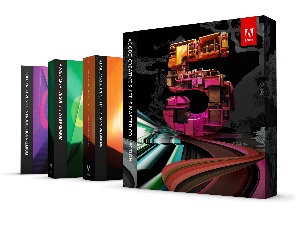
If you’re wondering why this could be good news then you probably have no reason to be on this website. It’s fantastic news. Actually, it’s better than that.Yes, for nerds like myself we will spend the next few months playing with the various demos which are free to download off Adobe’s site – And if anyone out there would like to sponsor me the £3000 odd to buy it, then get in touch!
But it’s more than just playing around with gimmicks. Adobe, like their jilted lover Apple, have shown a tendency not only to predict the future but to shape it too. What they say, generally goes. And by watching all the free programmes on Adobe TV and privately produced videos on YouTube, you can get a sense of where all this is internet stuff is going; what trends will last and what seems to be dying. Useful stuff to be savvy with.
Sad news.
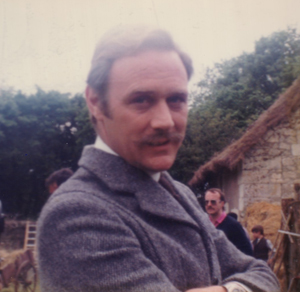
Christpoher Cazenove passed away last month. I was priviledged to have worked with him, albeit 25 years ago on the American TV miniseries “Kane & Abel”. I featured the clip in last Octobers blog (click here to see) This clip contains a small scene when the Abel family, en route to the church to baptise the new found infant, bump into his character, the Baron. Cazenove shot the close up takes on top of a step ladder rather than a horse and I remember being impressed by this simple trick of filming. Our scenes were filmed at the Château d’Ussé, France
Stop press…
Richard Leigh has persuaded “Malcolm Marvelle – Master of Mystery and the lovely Rita” to return to Jermyn Street Theatre this November 2010. Ticket information will soon be available on their website.
It’s a show not to be missed. But don’t just take my word for it. Click the video here to get a brief glimpse of what others have thought of past shows in the “Twilight Ballrooms Guestbook”
Creative Cow
What this site hasn’t got for the serious movie maker isn’t worth knowing. It certainly has a comprehensive collection of external tutorials covering a wide array of categories, including many Adobe products, specific camera equipment and the main 3d modelling programs. And when you’re on a tea break have an explore of the rest of the site too. The showreels people have submitted are awesome and inspiring, there’s a jobs board, excellent resource and links to some other fab sites.
Visit www.creativecow.net
Free CG software – Blender
Have you ever wanted to create your own CGI graphics but thought it out of your price range and ability? Think again. Ever heard of Blender? What?! It’s been round for years, c’mon! Check out the website. Basically, its open source software which means its free to download and use. And like most open source software (OSS) many people use it. Which means theres quite an established community online who forum and discuss its problems and potential. So if you get stuck on something, chances are there are many before you who have had similar problems too. And those people have often found the solution you require and have posted it on a forum. Good huh! And there are numerous free tutorials, repositories, libraries, textures, links etc…Download it now at www.blender.org
For good YouTube tutorials on Blender basics, I would recommend Super3Boy’s tutorials. Okay, he does sound like a young teenager and throughout his 30 odd tutorials his voice breaks, but the guy is good and tells you what you need to know with some fun, easy to follow examples to get you going.
tutsplus.com
 Tutorials for photoshop, webdesign, after effects, vector graphics, cg, audio and much more.
Tutorials for photoshop, webdesign, after effects, vector graphics, cg, audio and much more.
Regularly updated, the tutorials are either on video or on well illustrated instructions. They are also in plain English. So whether you’re an expert or a novice, you’ll pick up some handy tips and tricks on this site.
Visit tutplus.com
Dream House!
In the mid-nineties, central Europe was gripped by the biggest thing in music since Michael Cretu’s “Enigma” stormed the charts in 1990. Swiss-born Robert Miles released “Children” – a style of music that would later become known as Dreamhouse/Trance. It was to be played in clubs and caverns all over Europe for the next 35 years and would later prove popular with fitness instructors, DIY superstores and speeding motorists.
I would now like to present “La Twilight Serenissima” – my own humble tribute to this, often deliberately forgotten, genre of music. This track was originally intended to be a cheesy underscore for a magic trick.
Happy New Year!
Have started learning the basics of 3ds Max and there’s still the new look Blender 2.5 Alpha version to learn. I’m in geek heaven.
Production is currently underway also for another episode of Insomnia due in the Spring. I think its the best one yet and will be the first one in WideScreen.
Widescreen is going to be more common on this website. And HD!
Site of the Year – Video Copilot
Video FX guru Andrew Kramer and his team run this website that sells their own VFX products and After Effects plugins including Action Essentials 2, ProScores, Twitter, Optical Flares, Riot Gear and more. These are very professional looking products at a snip of a price that you’d expect to pay elsewhere. But it is not just these that makes this site my Number 1 choice for any creative artist starting out on their own. It is the 100+ online tutorials by Kramer that are…free to watch! Kramers enthusiasm and passion for the subject is infectious. If the software, the tutorials or his positive personality don’t inspire you then I’m sorry for your loss. And it is your loss! Don’t be a loser. Visit www.videocopilot.net and buy their products! Now!
Blast from the past.
Mr Rock n Remix
This clip shows my recent experiment with a Vocoder. It basically takes an input such a vocal wave and sends it through the modulator of a synthesiser. Then when you play a chord on the synth, the input can be heard mixed with the chord that your playing on the synth. On a monotone level it can produce a robotic sound. Speak live through the mic/modulator input and you can get that robot to say anything.
It works very well with chords too as you’ll see here. I’ve used Lynsey Parkin’s sampled vocals that were used on Mr DeJa Vu which feature in Episode 3 of Insomnia.
If you’ve not yet watched Insomnia – Episode 3 then this is the original

